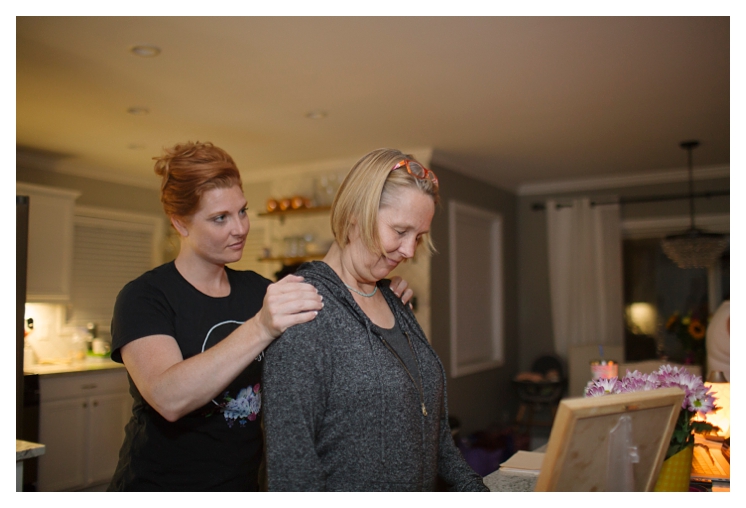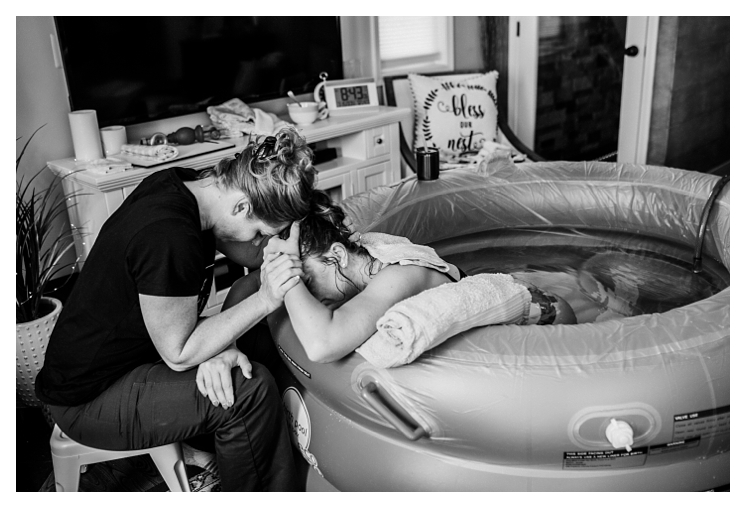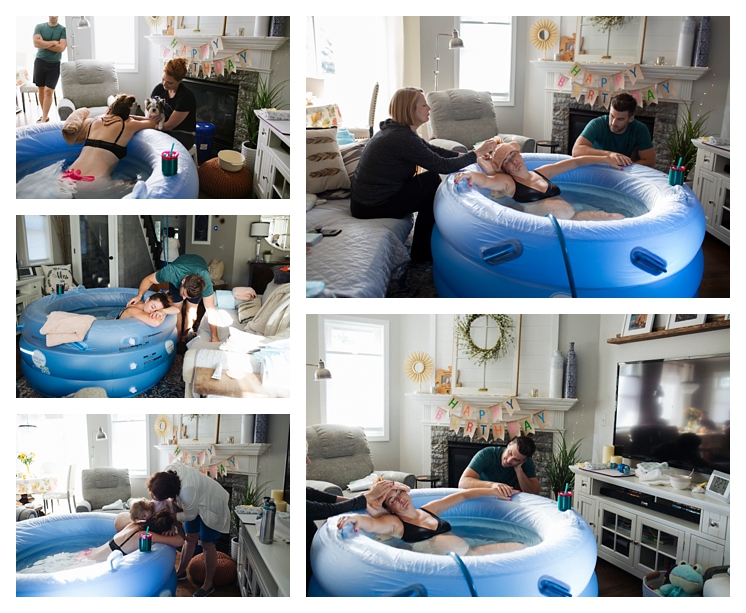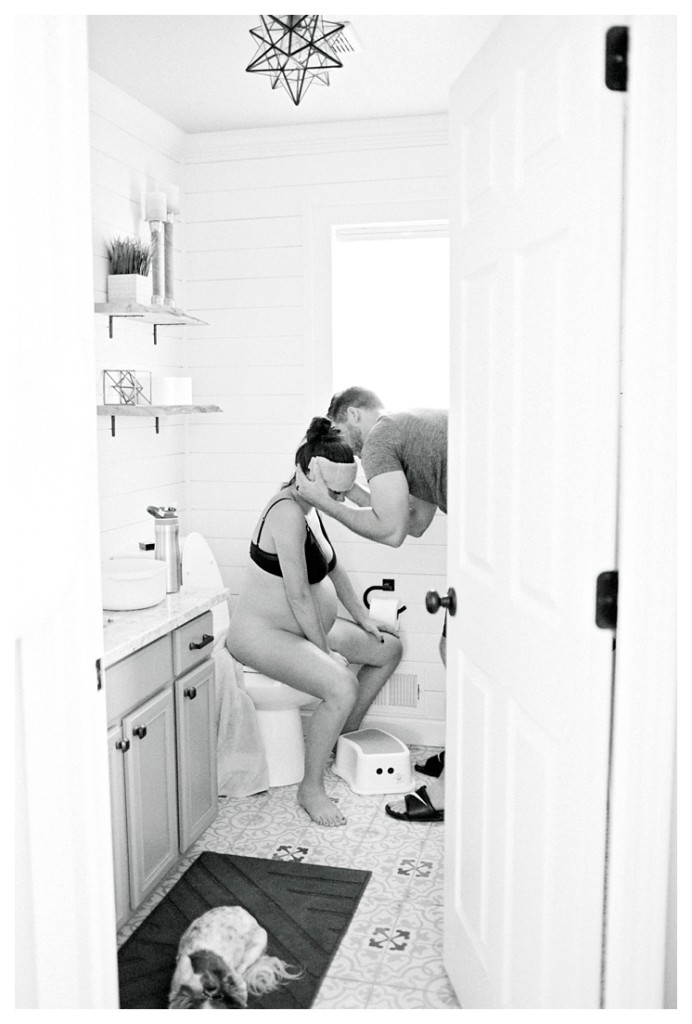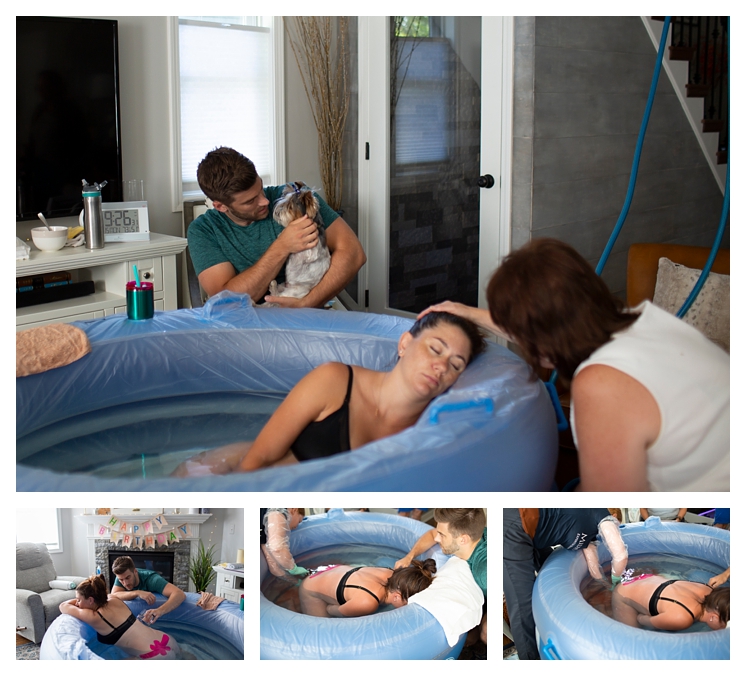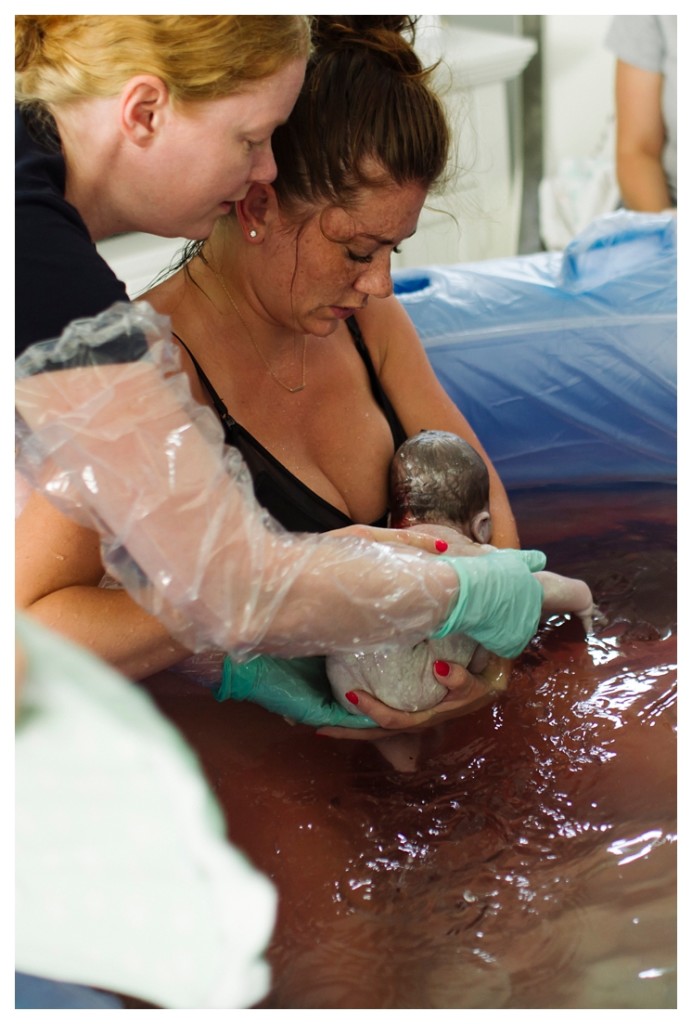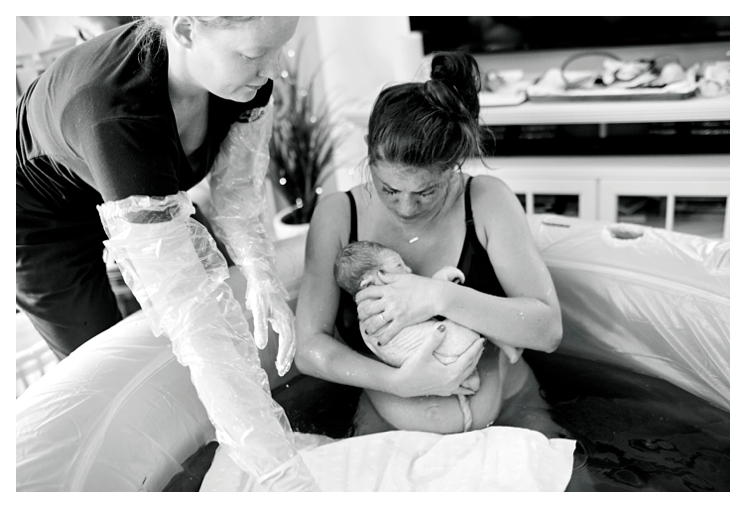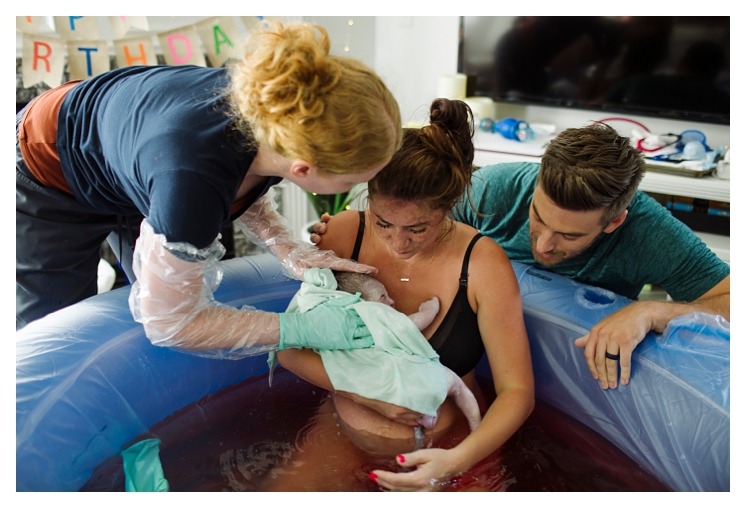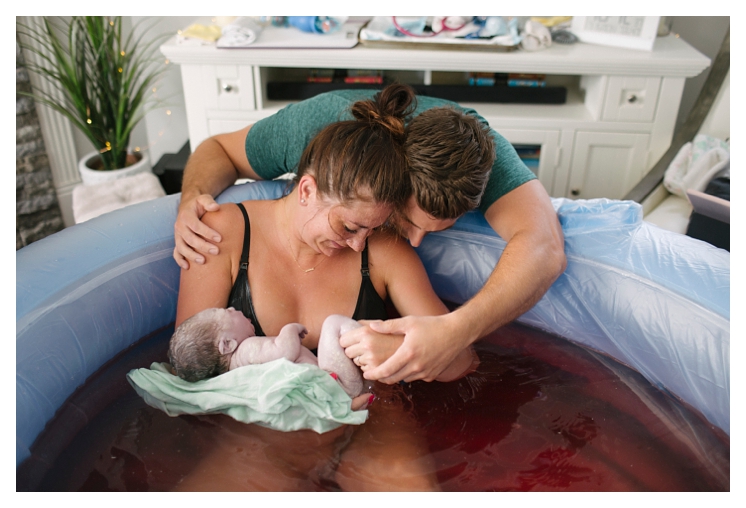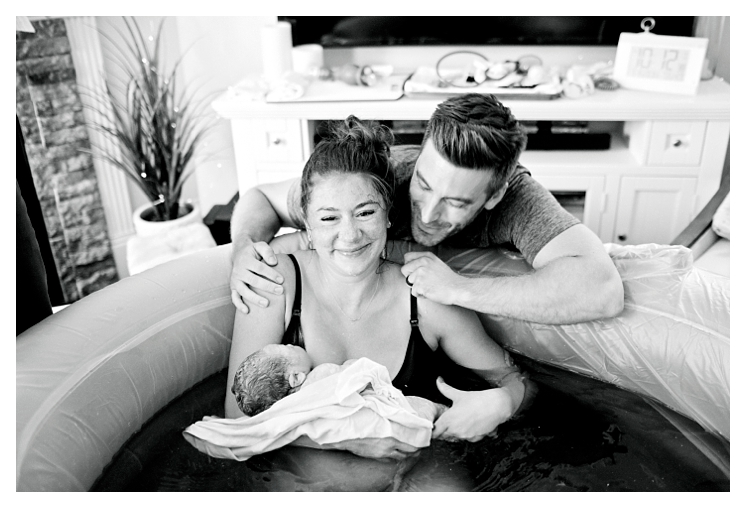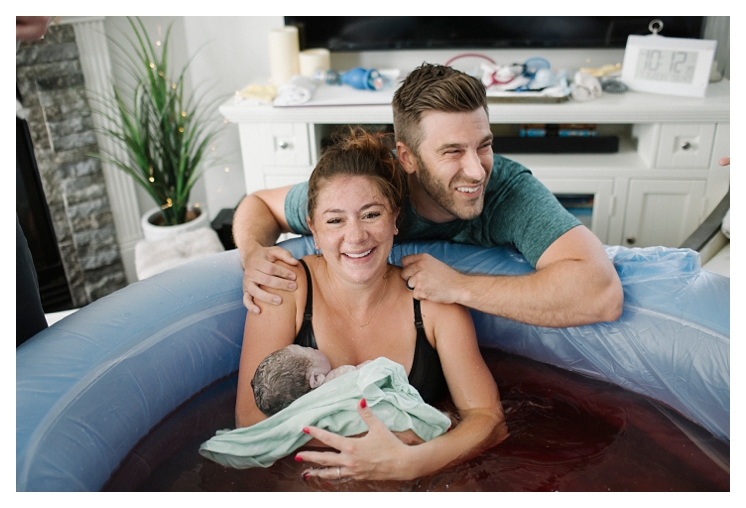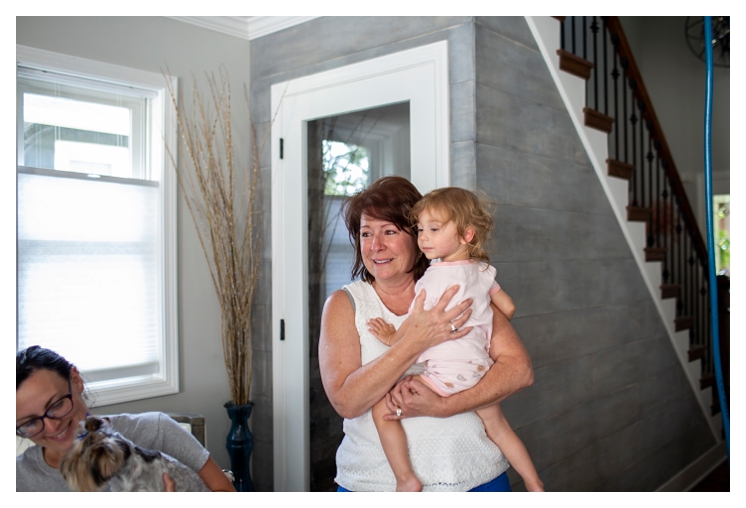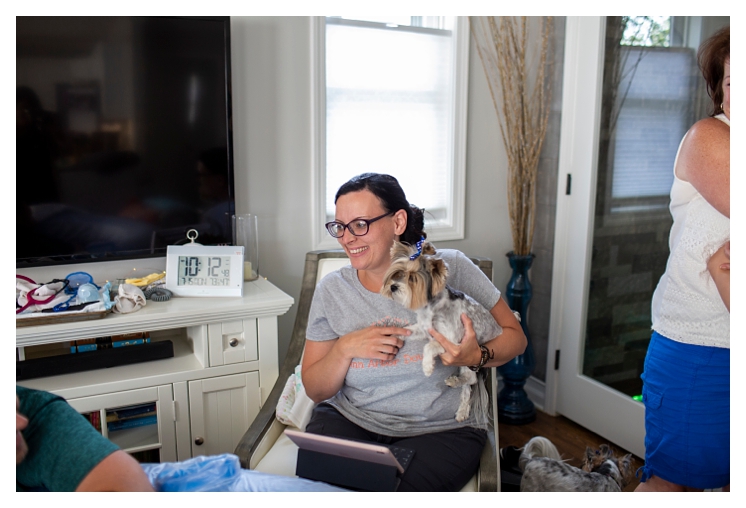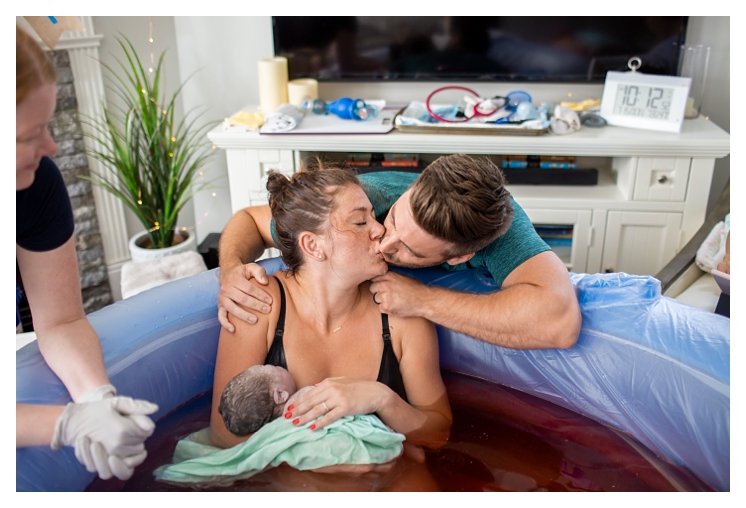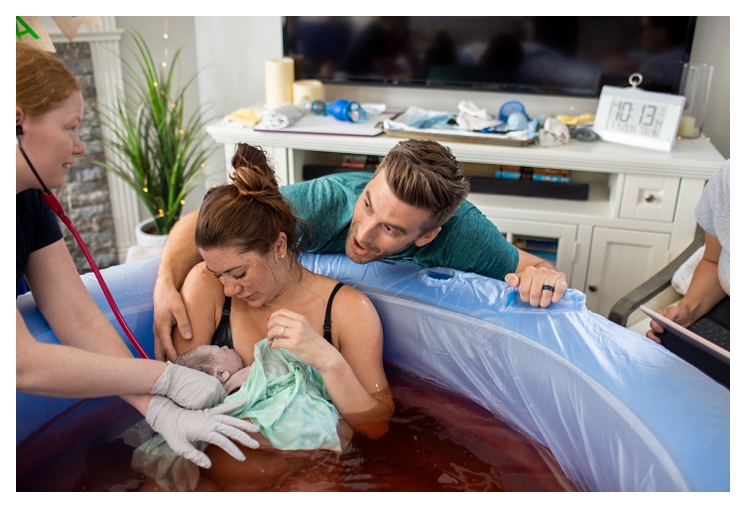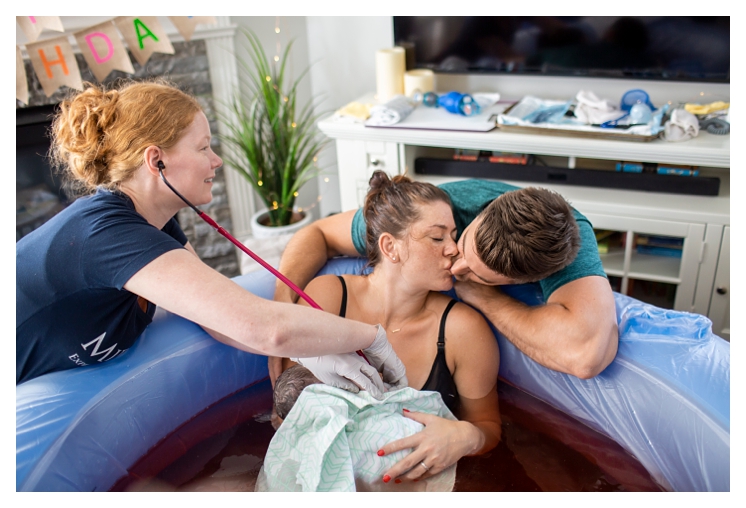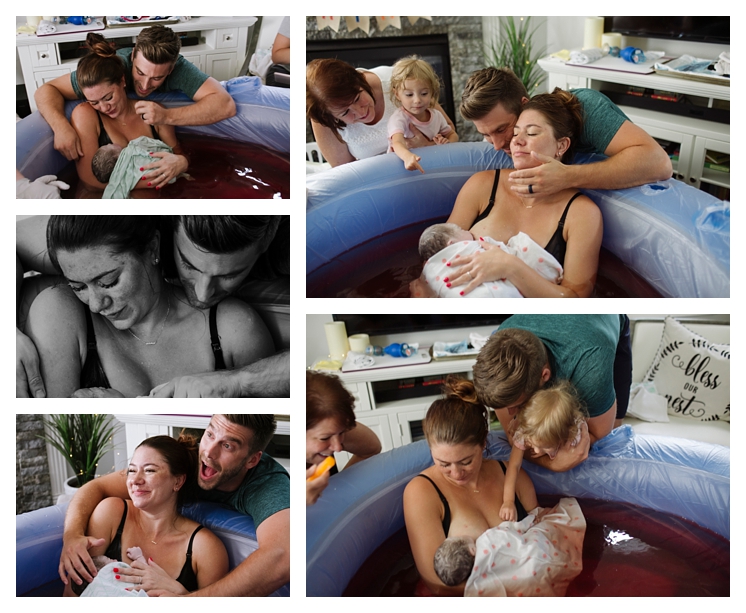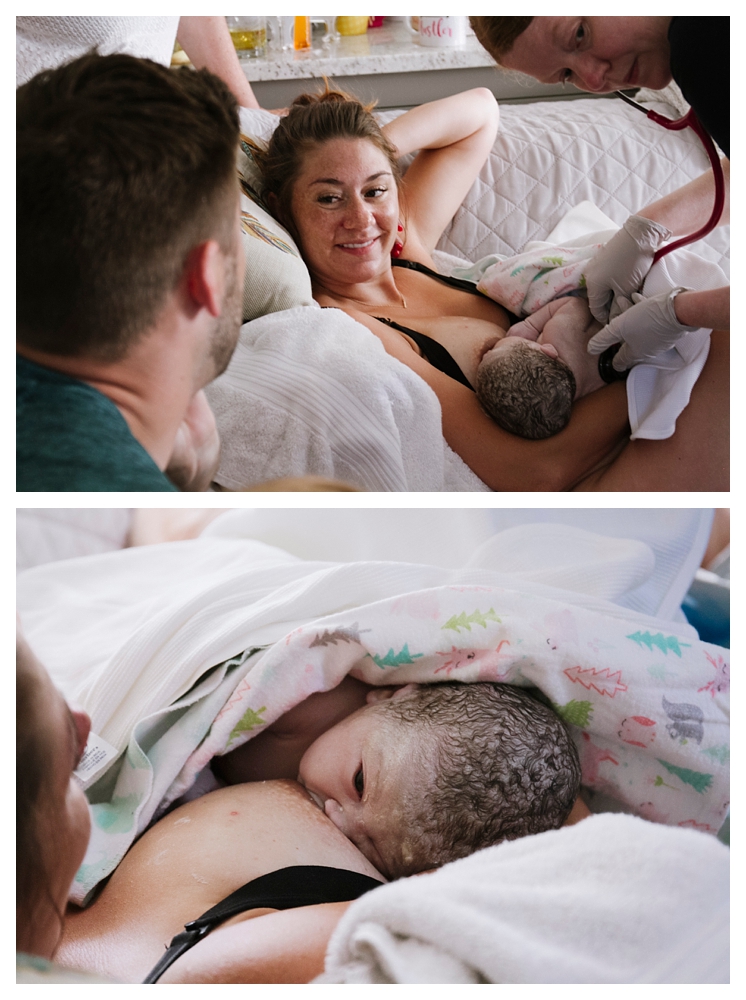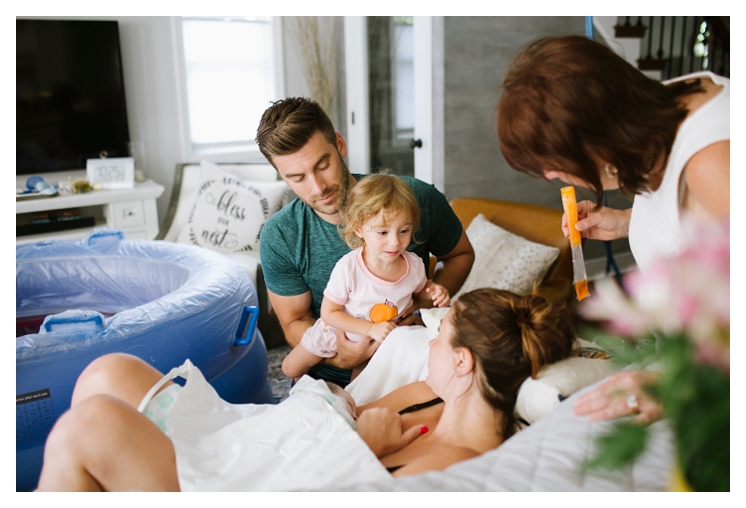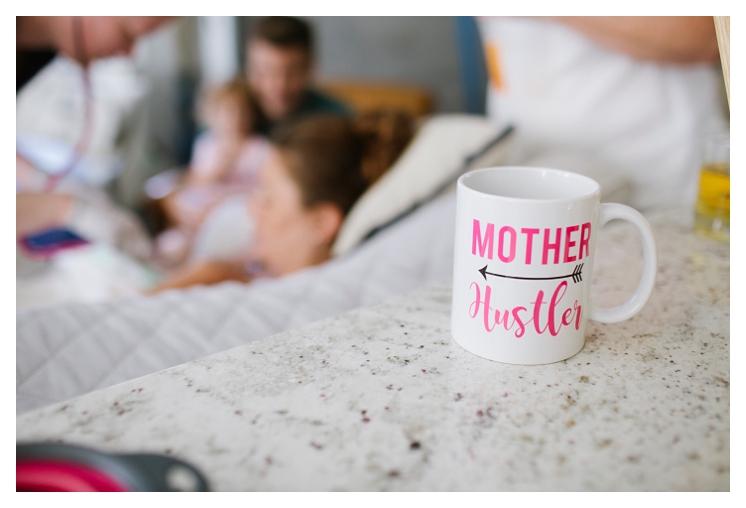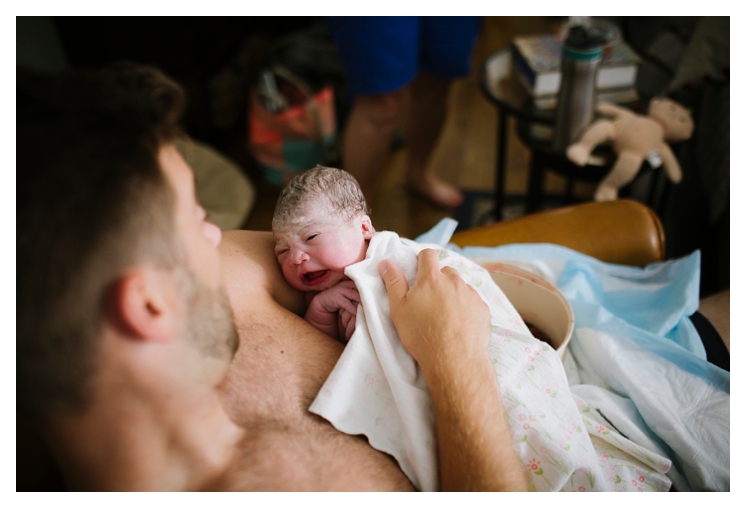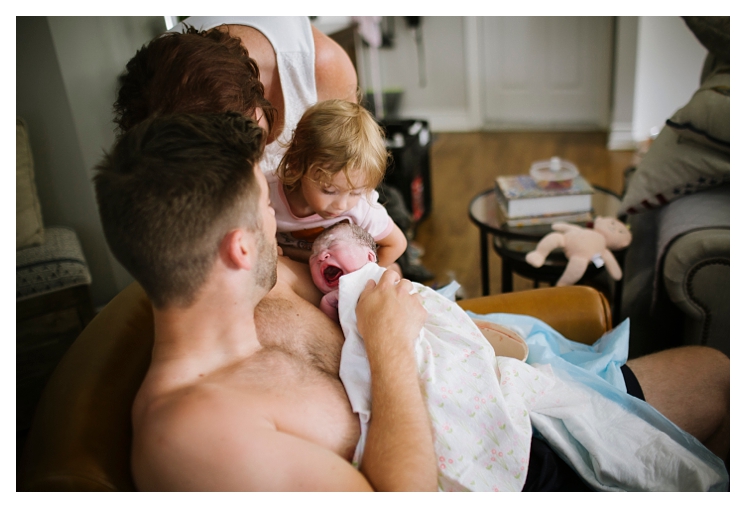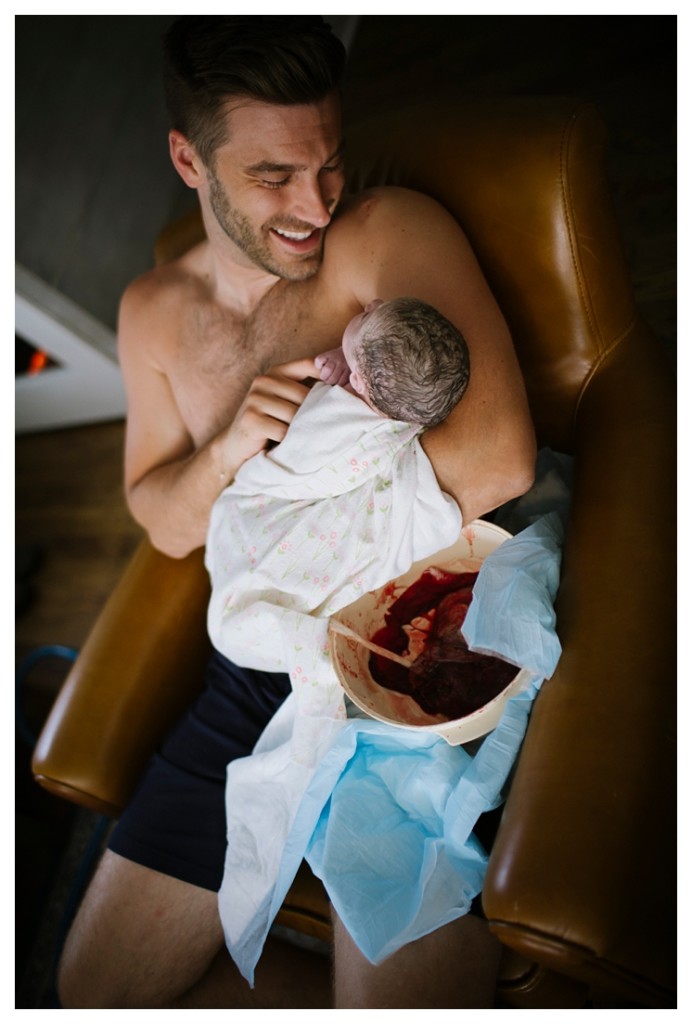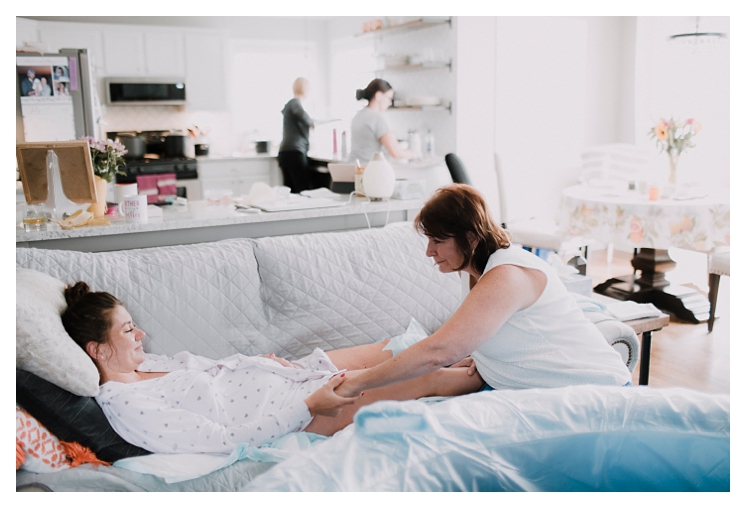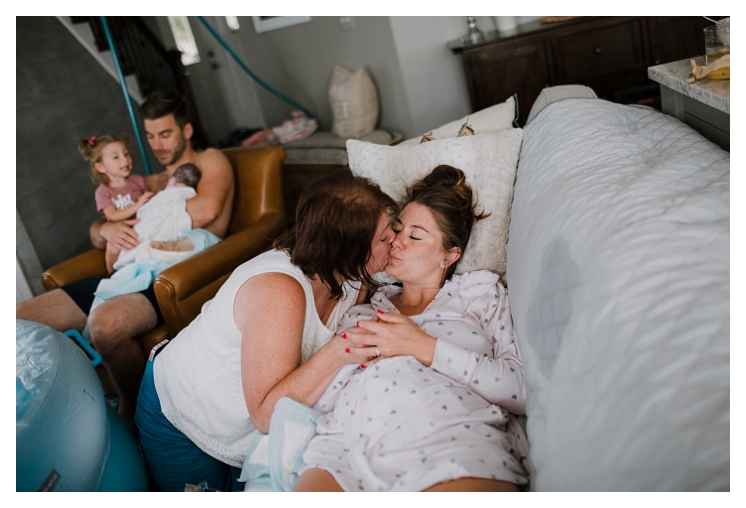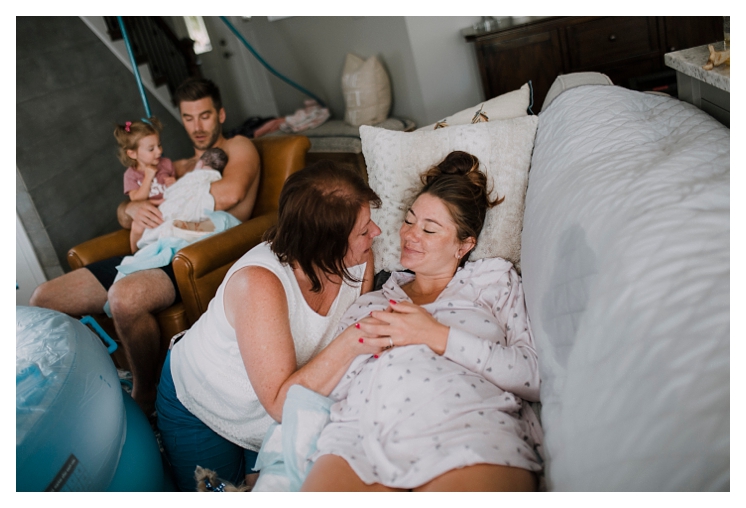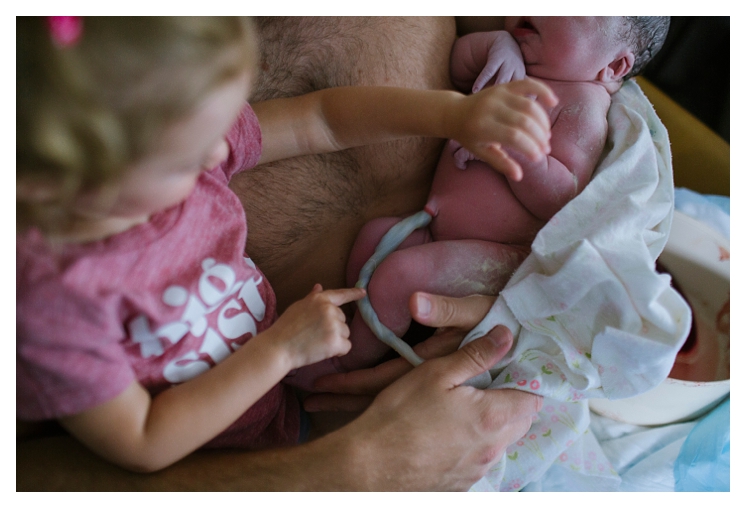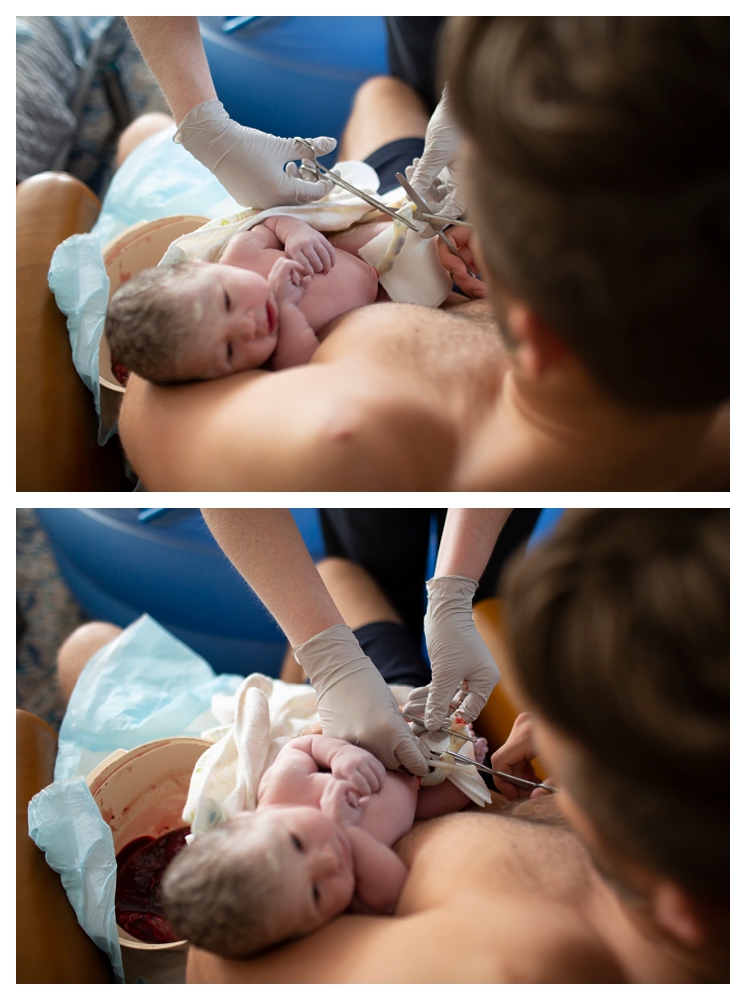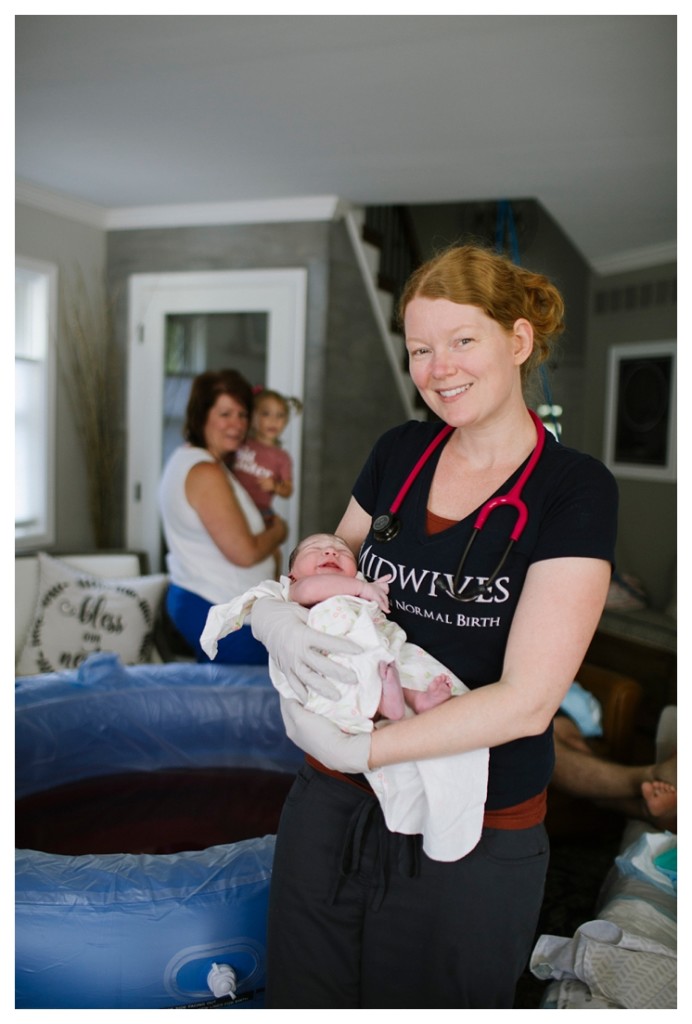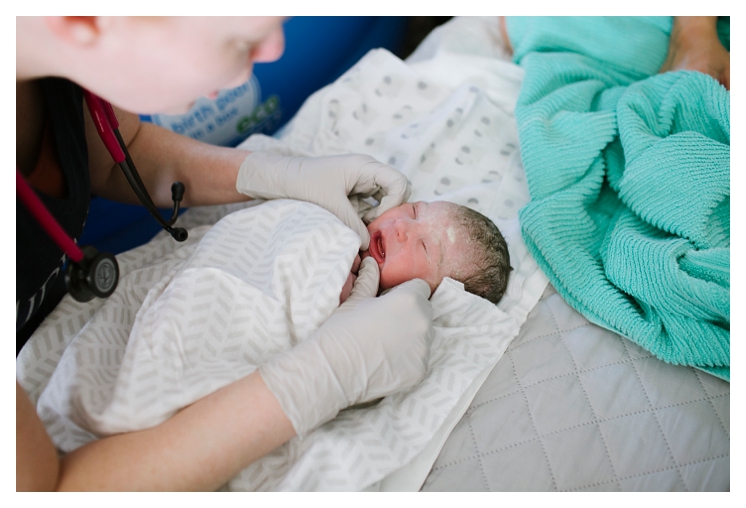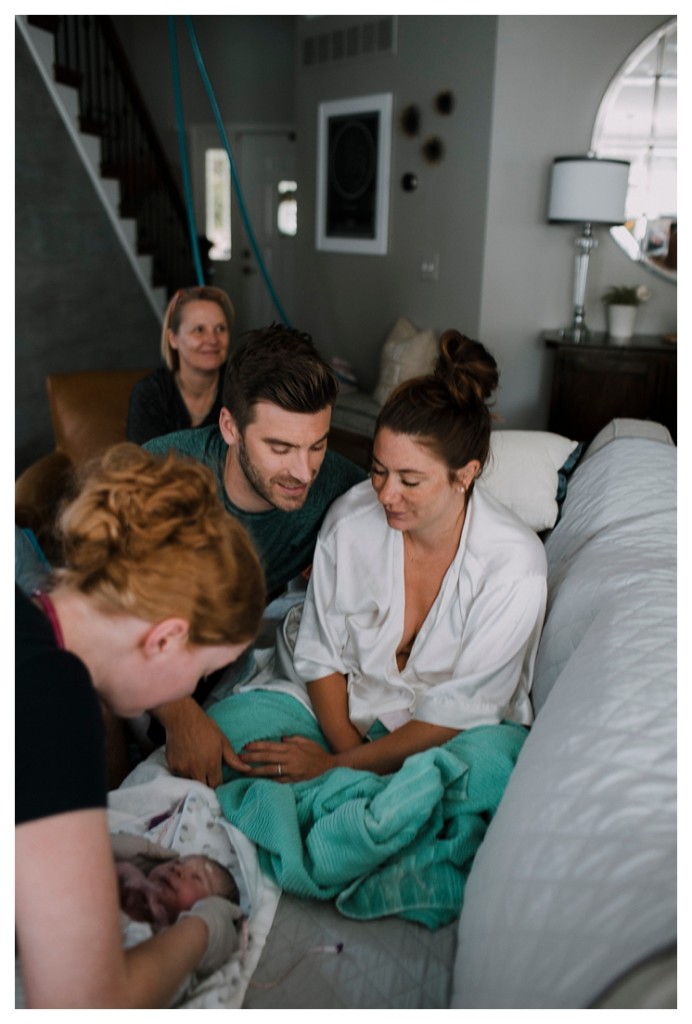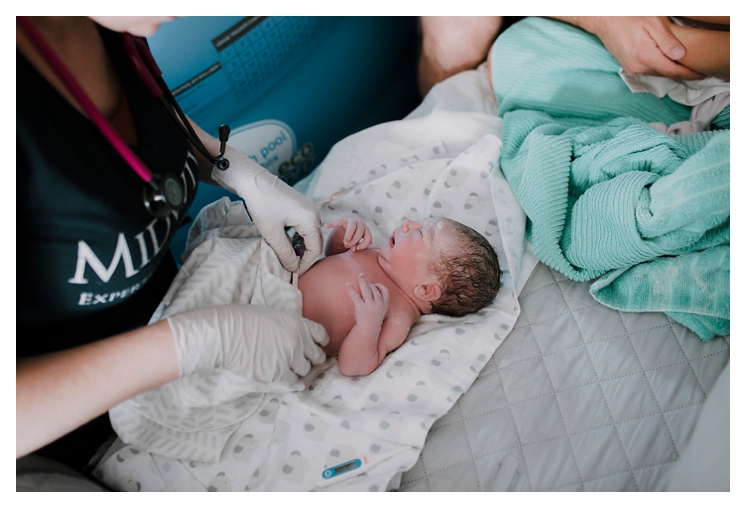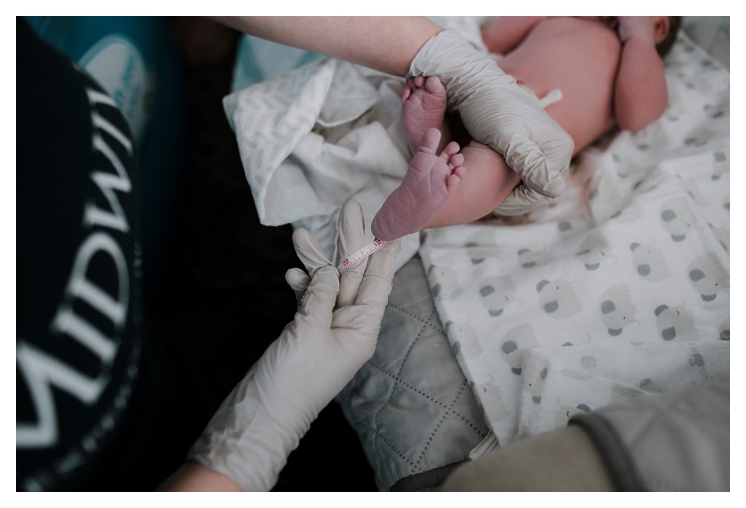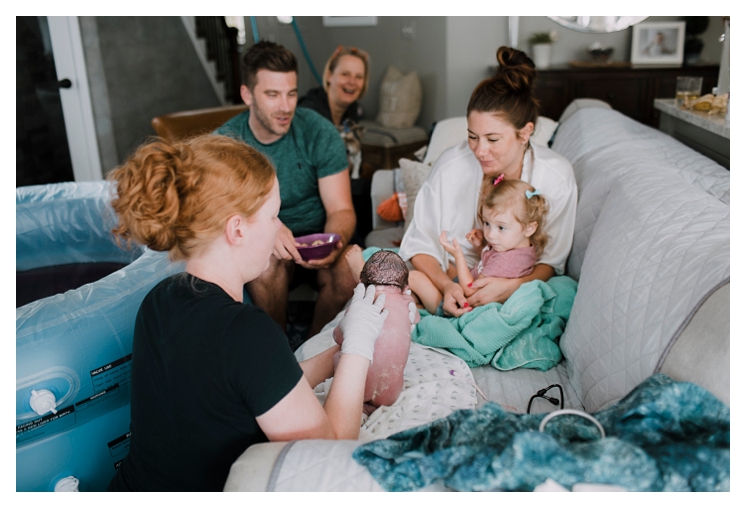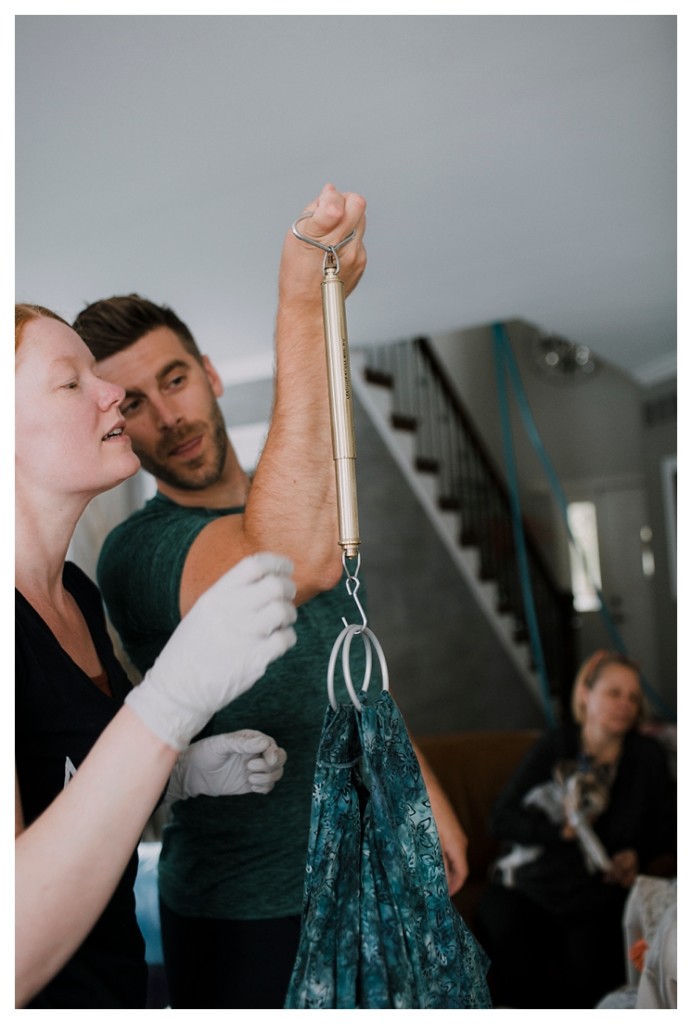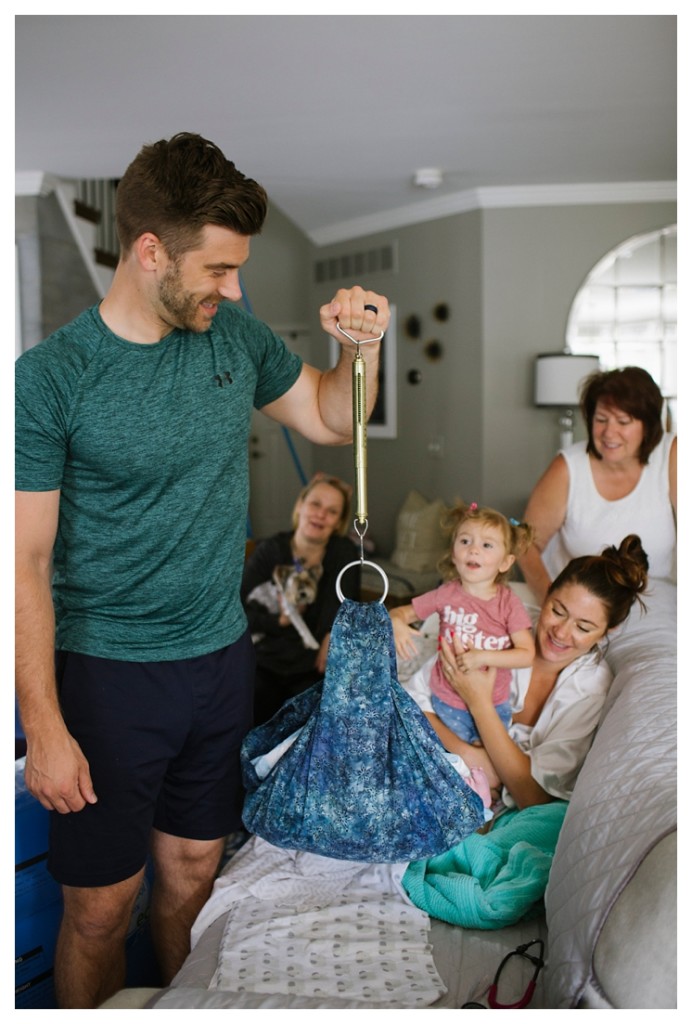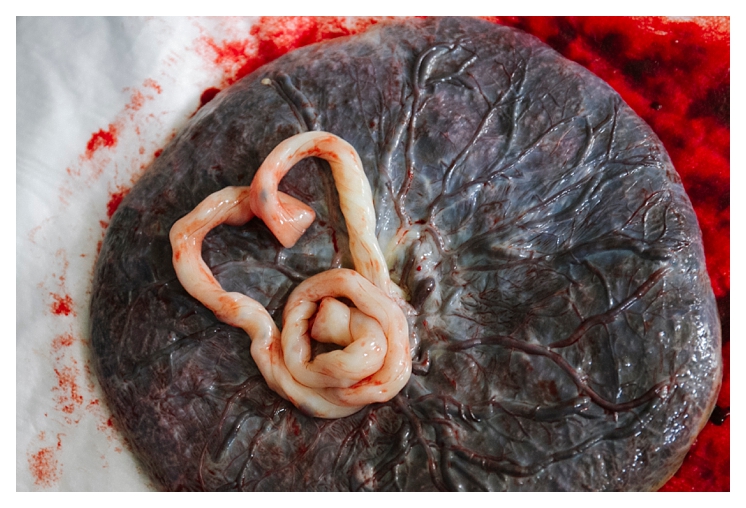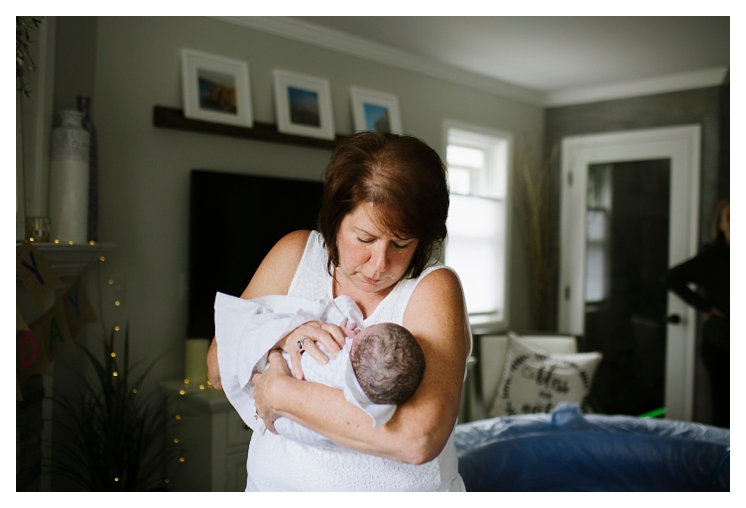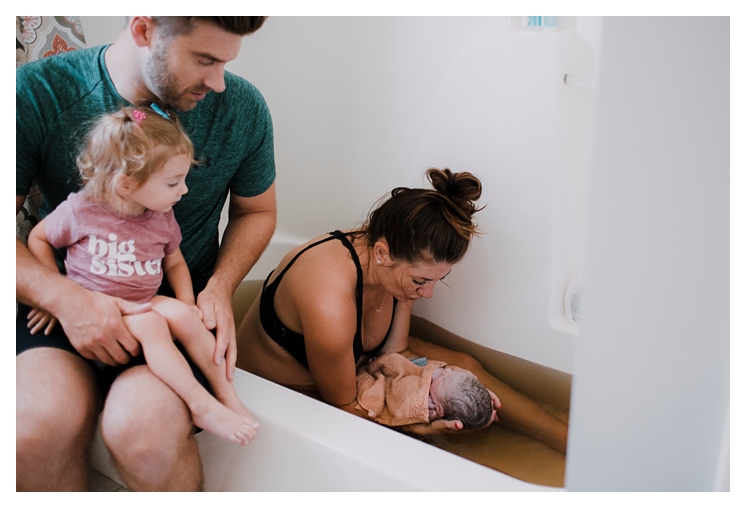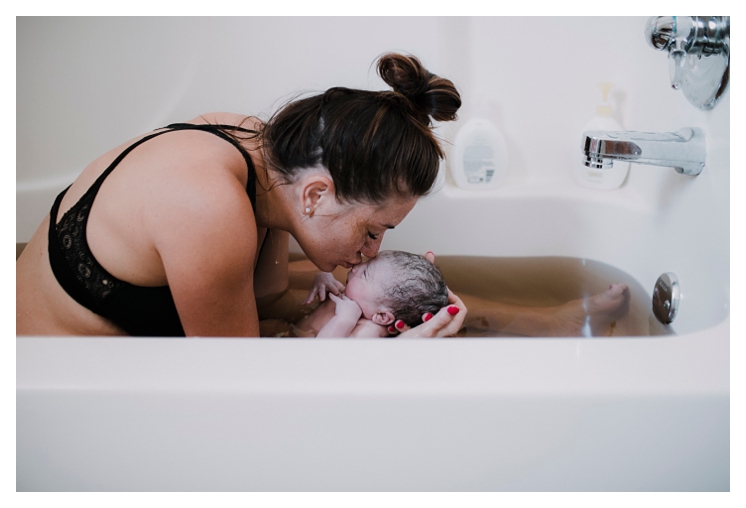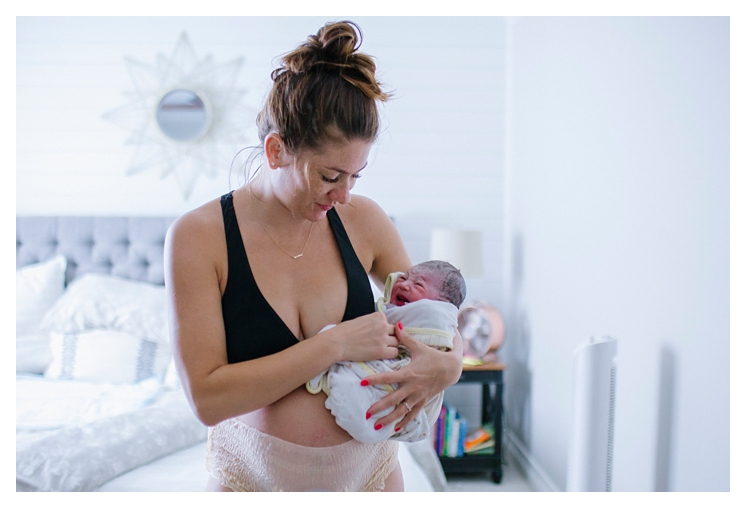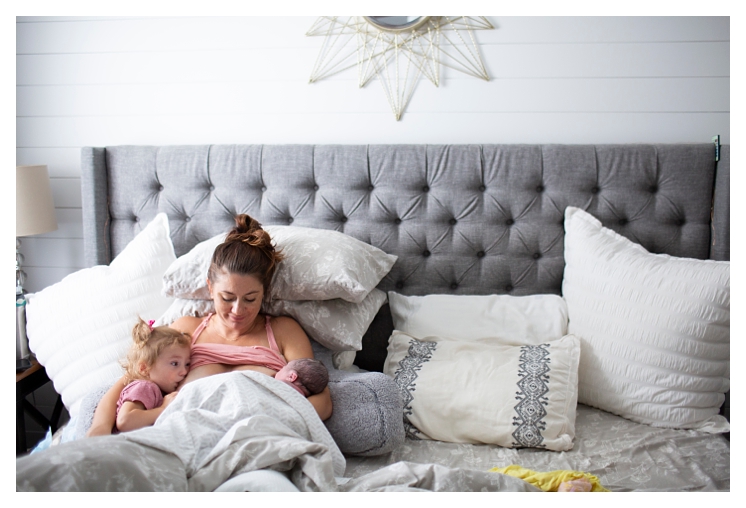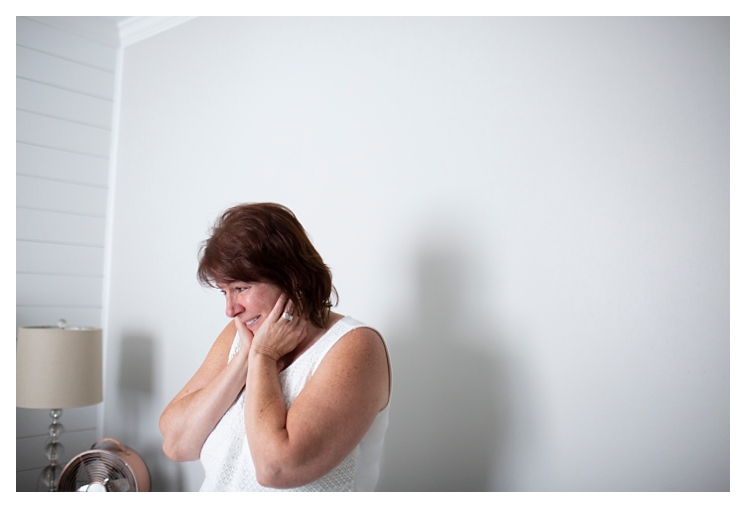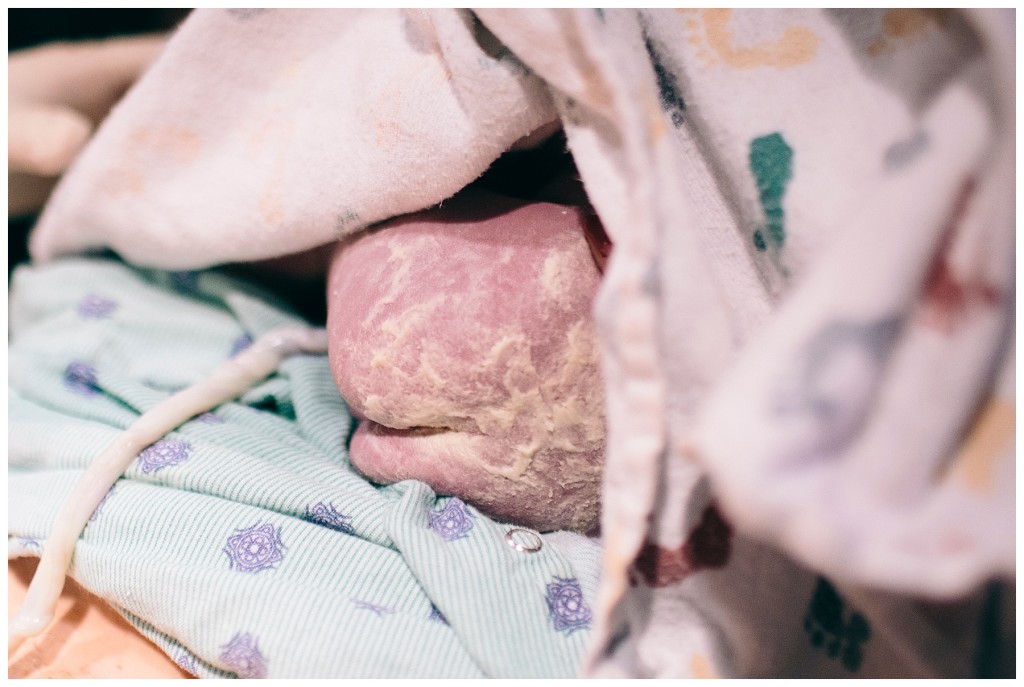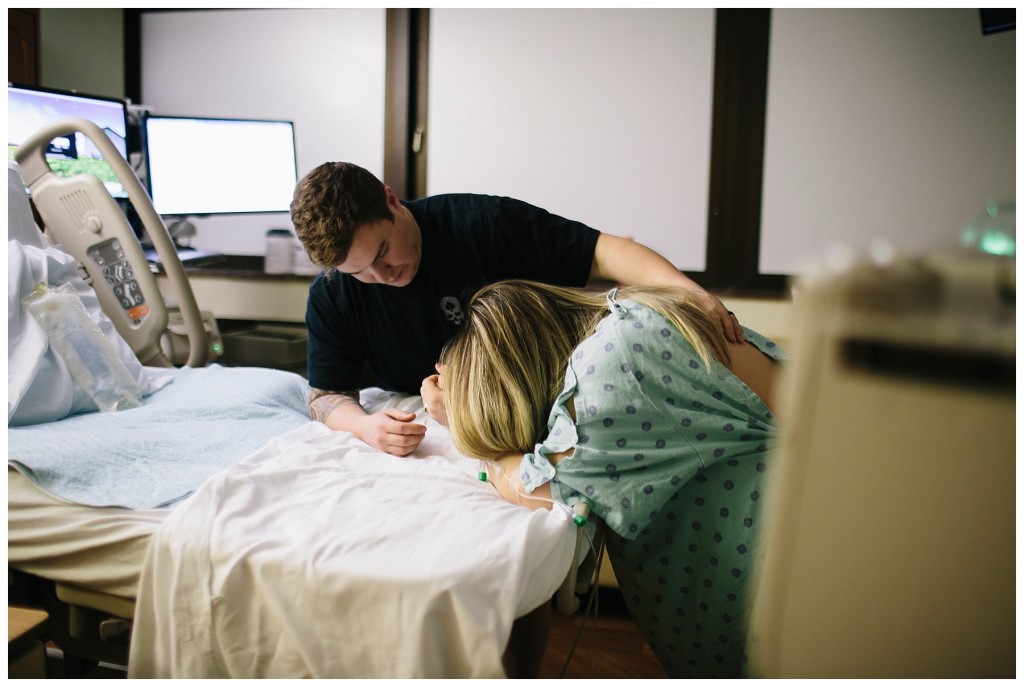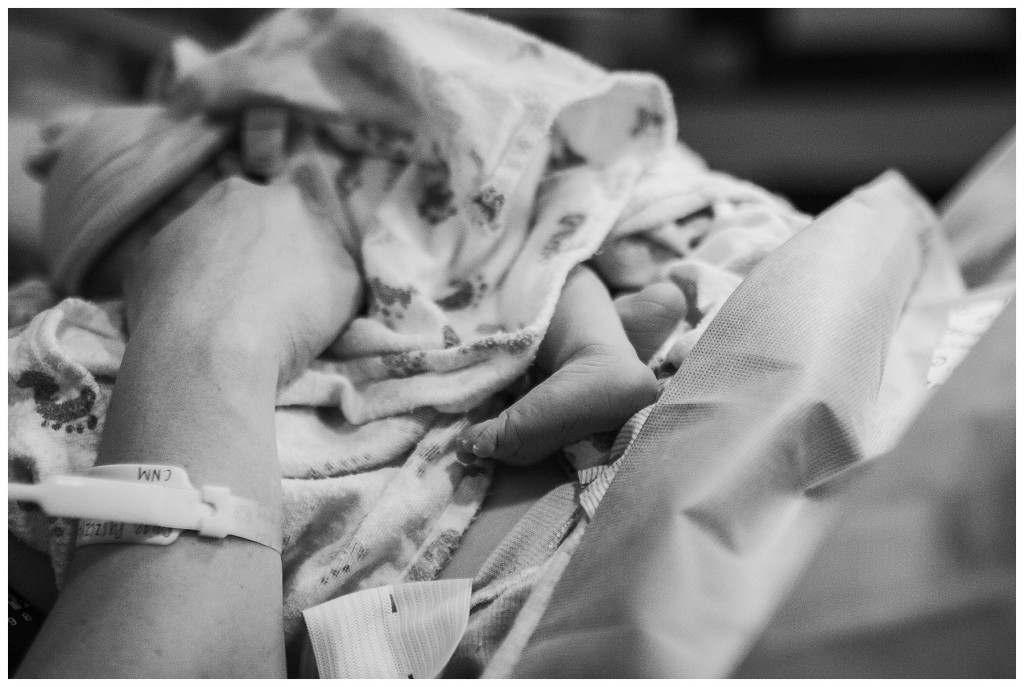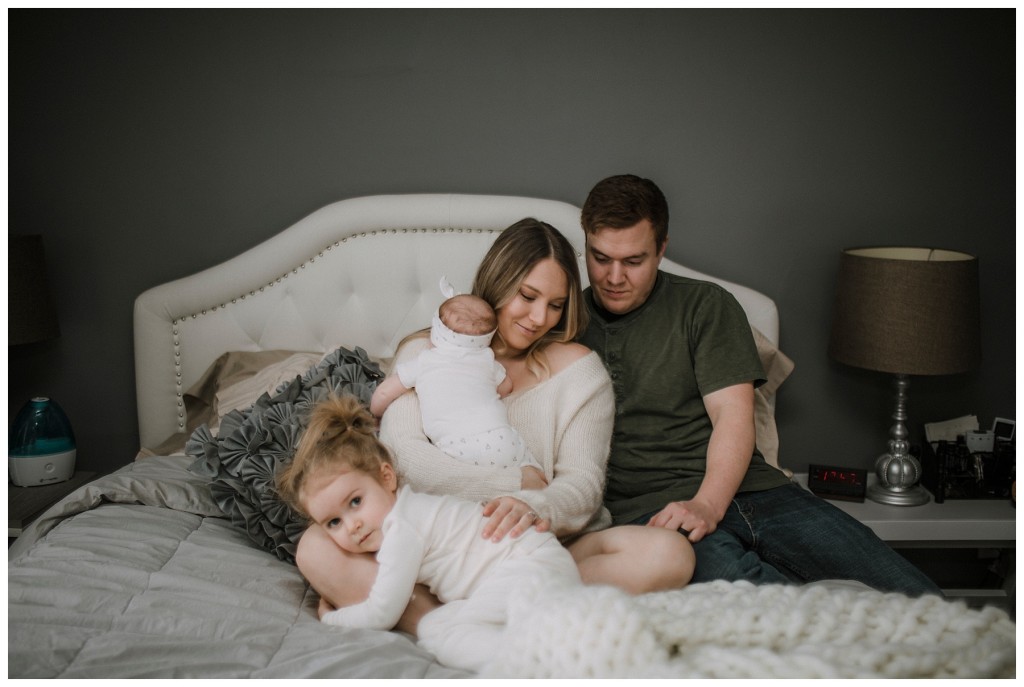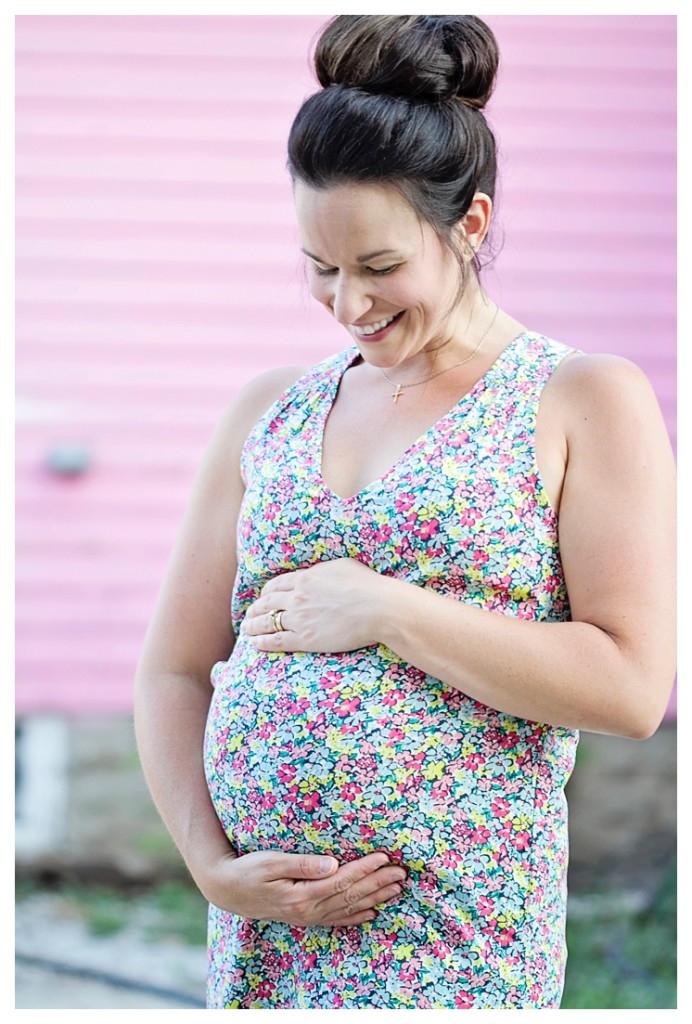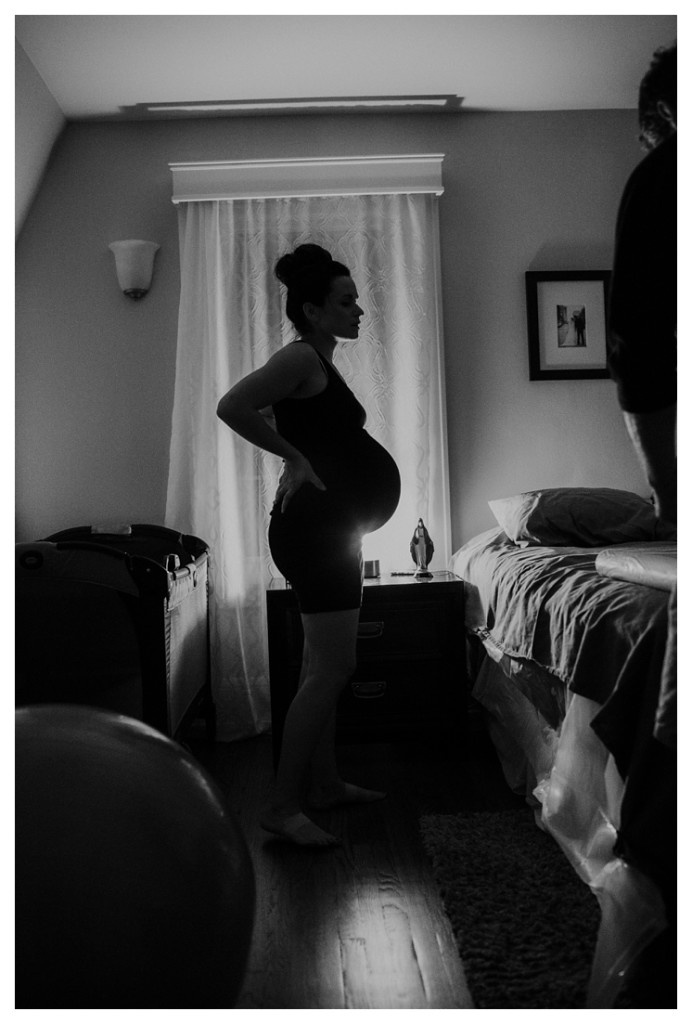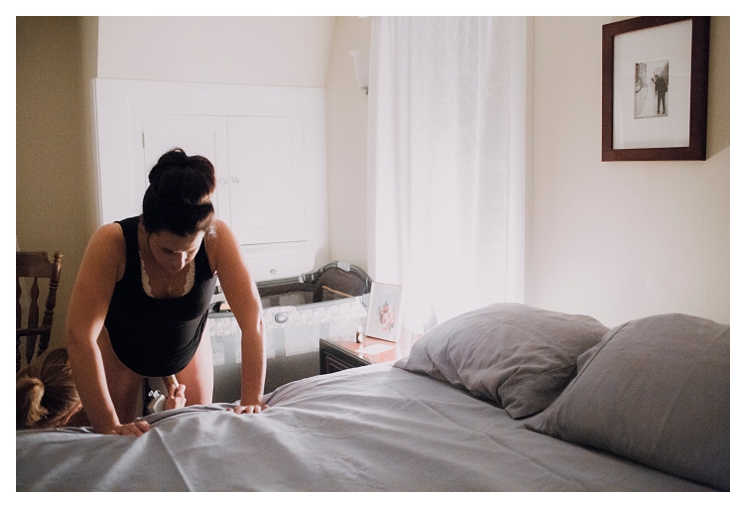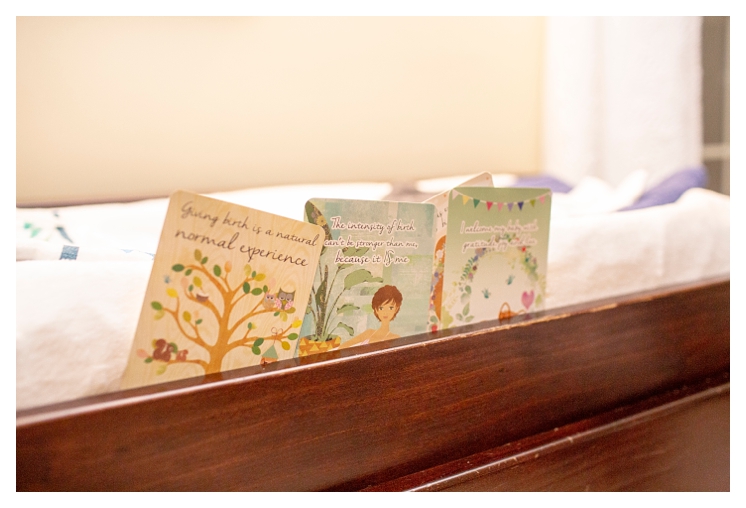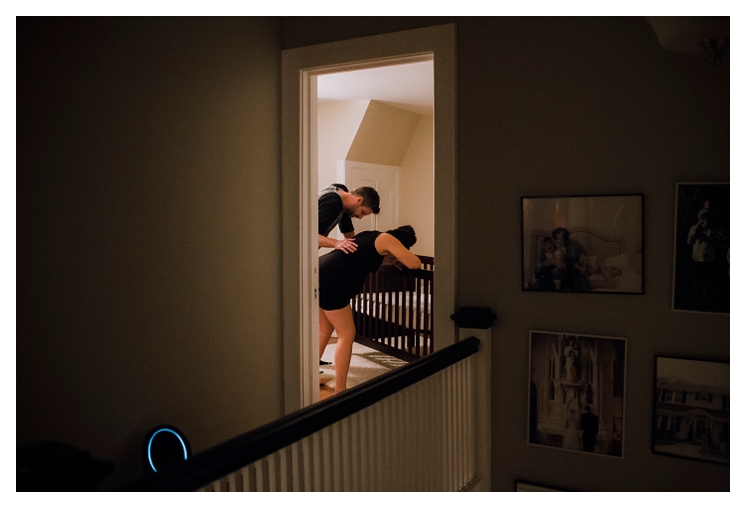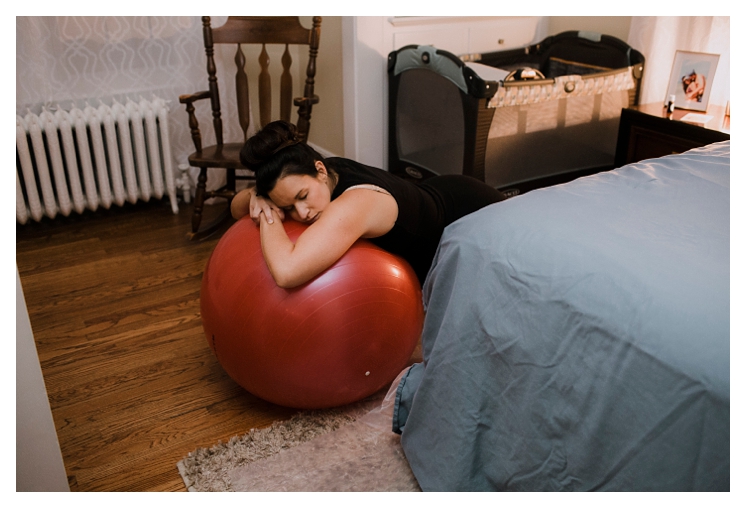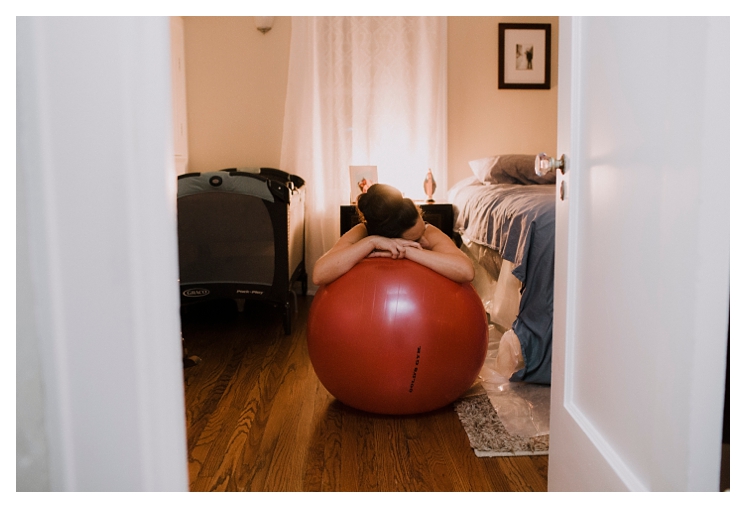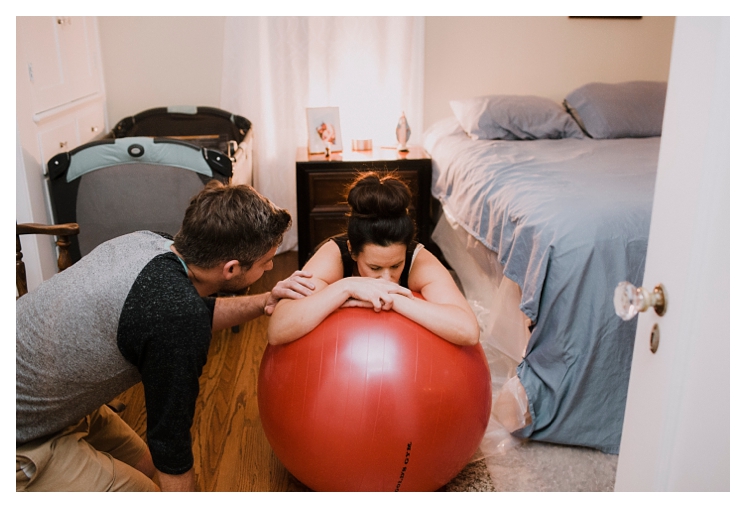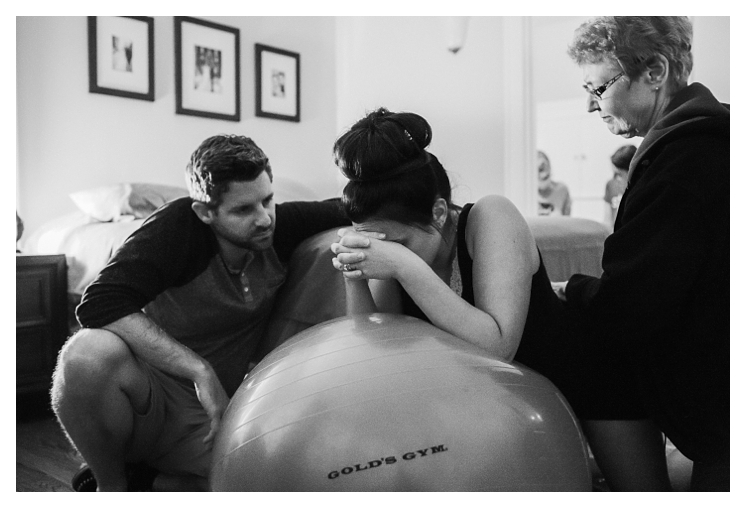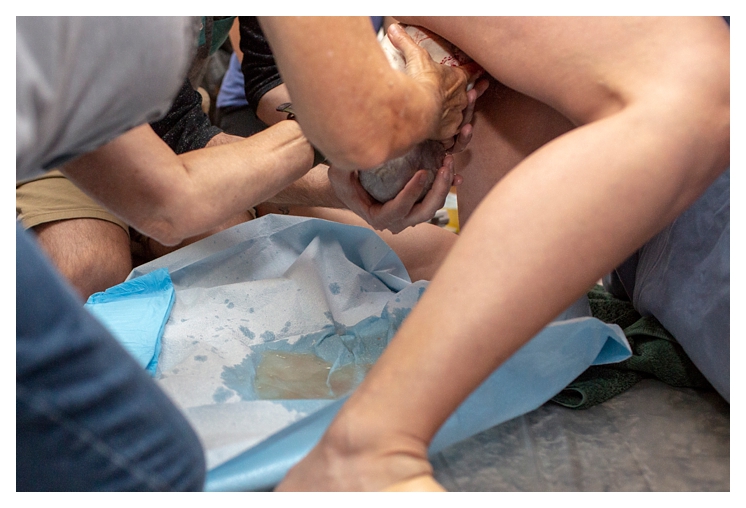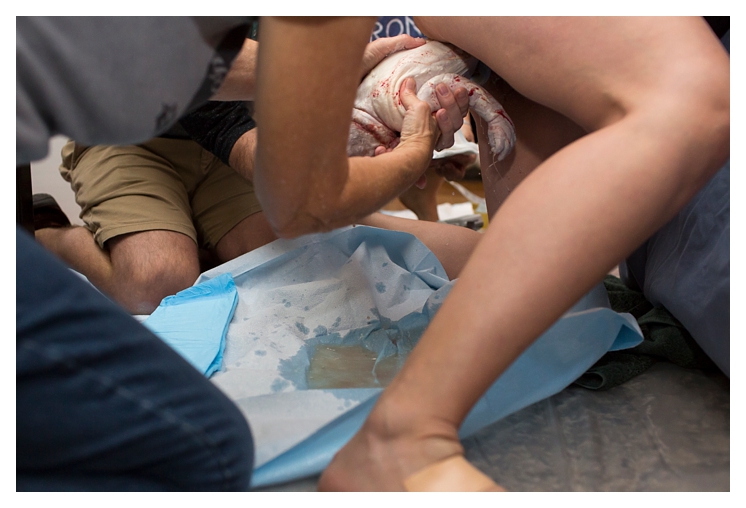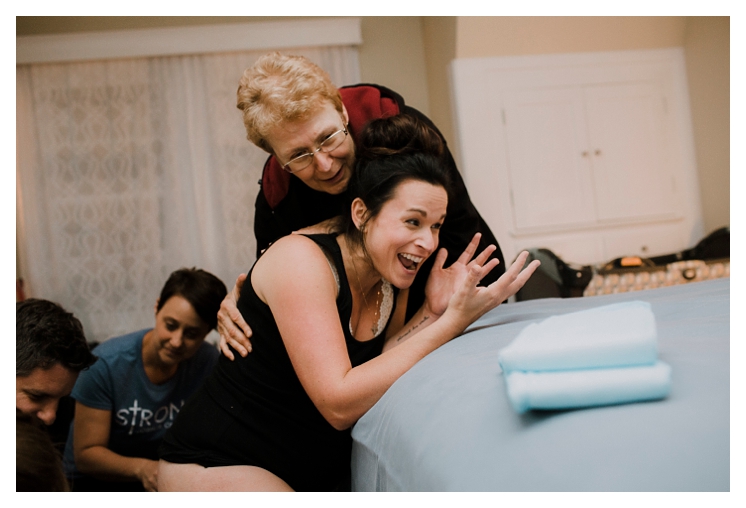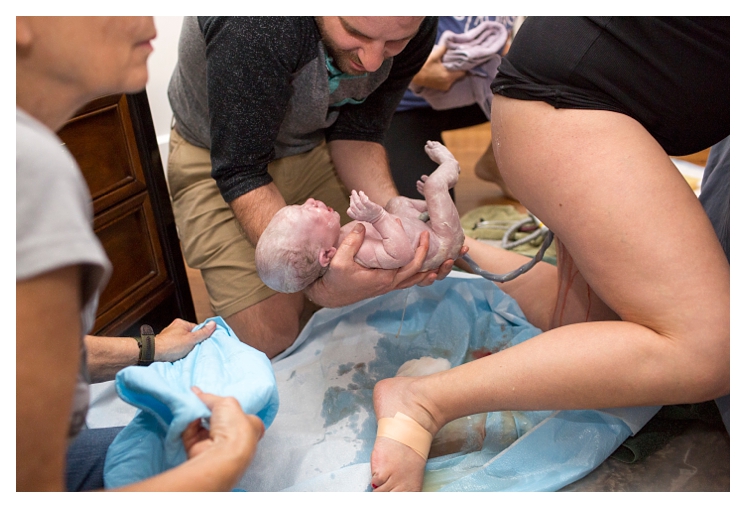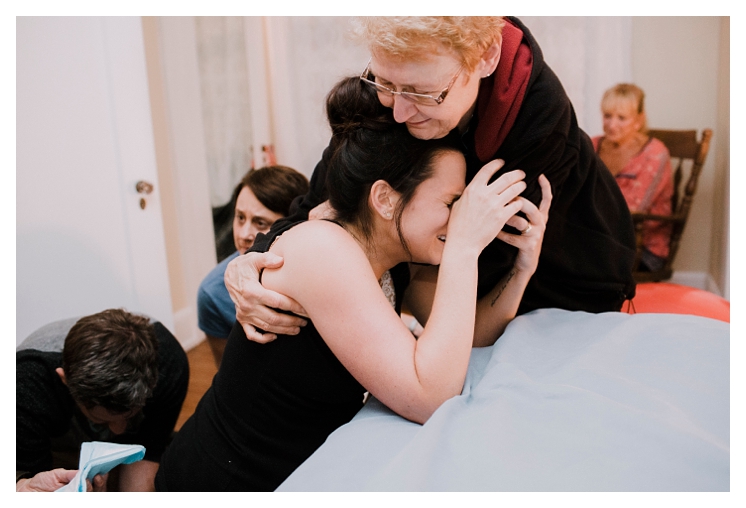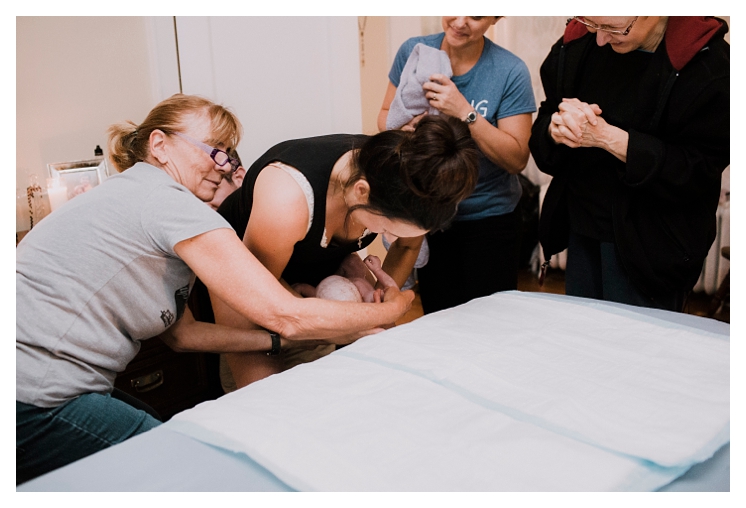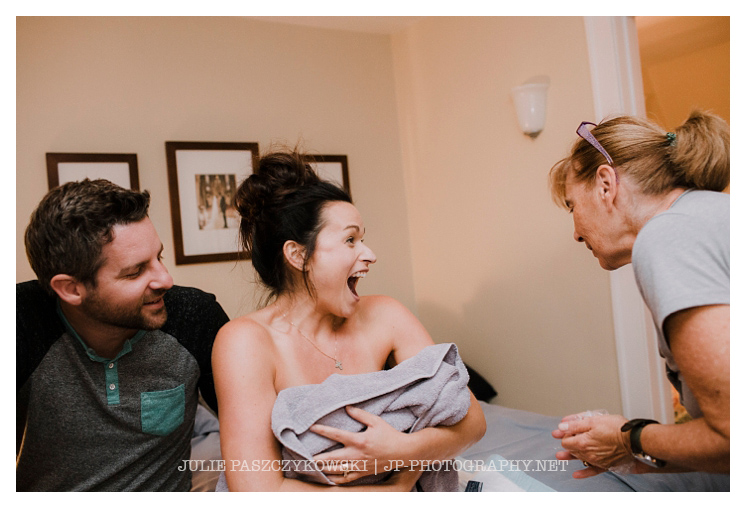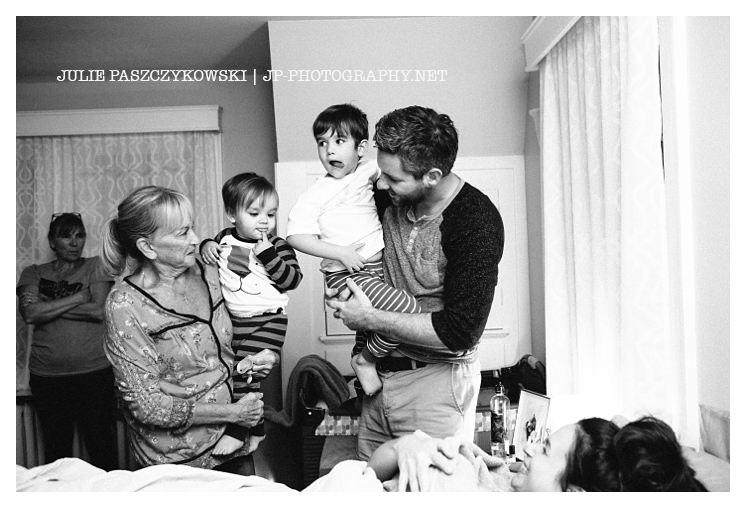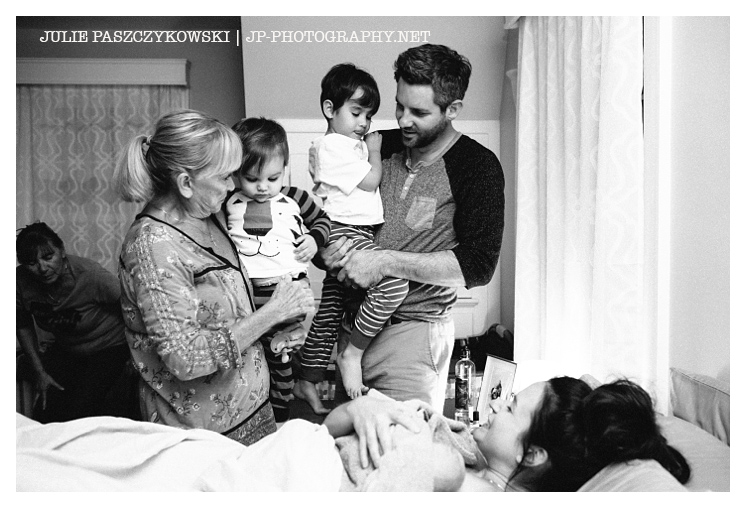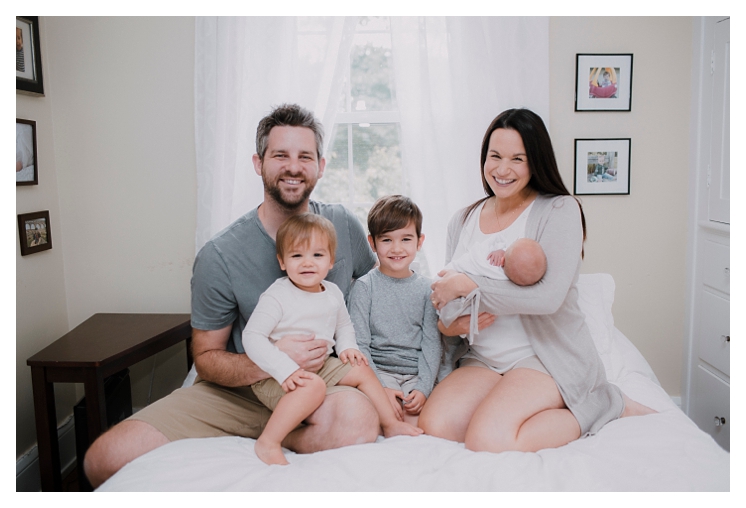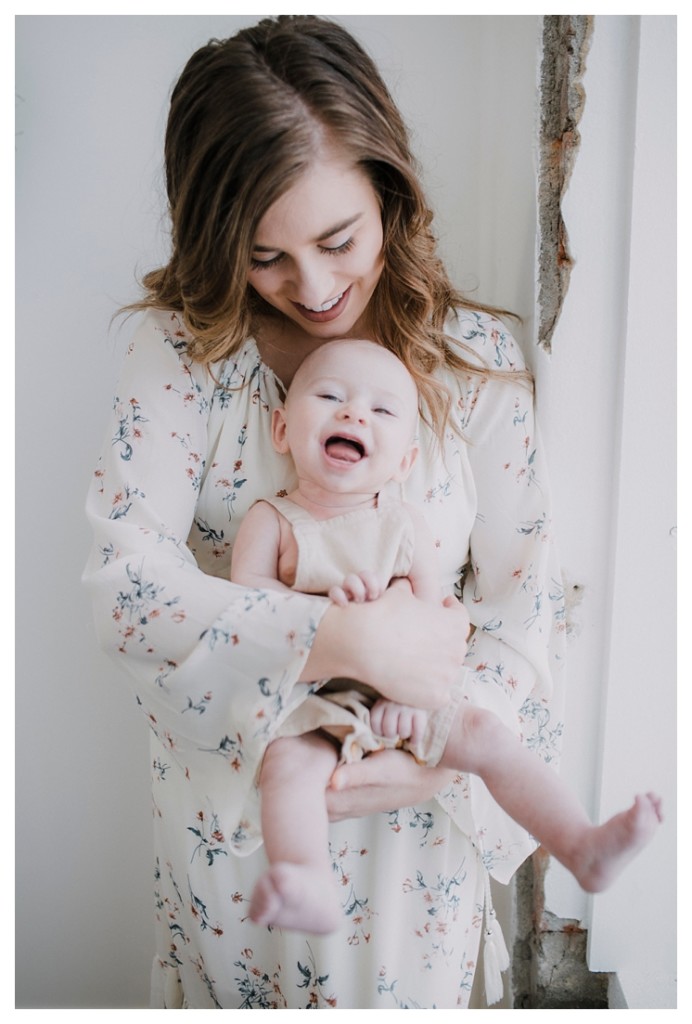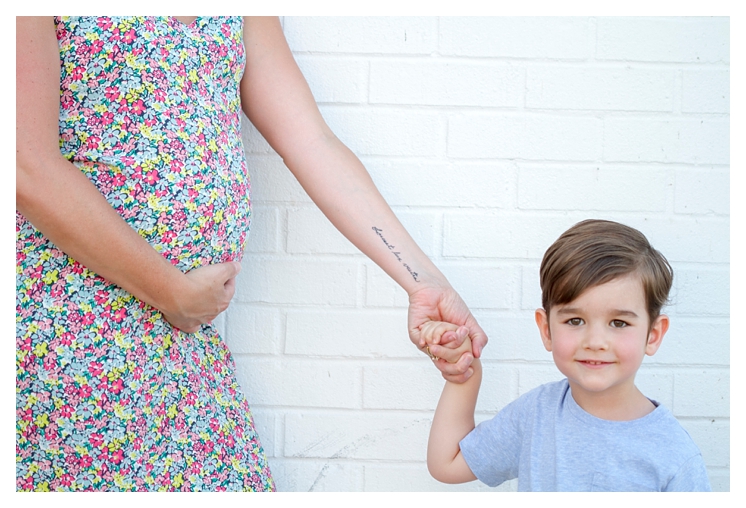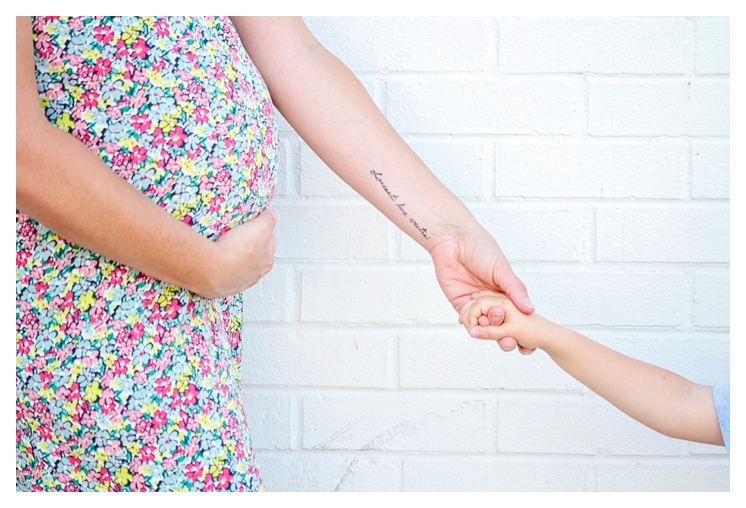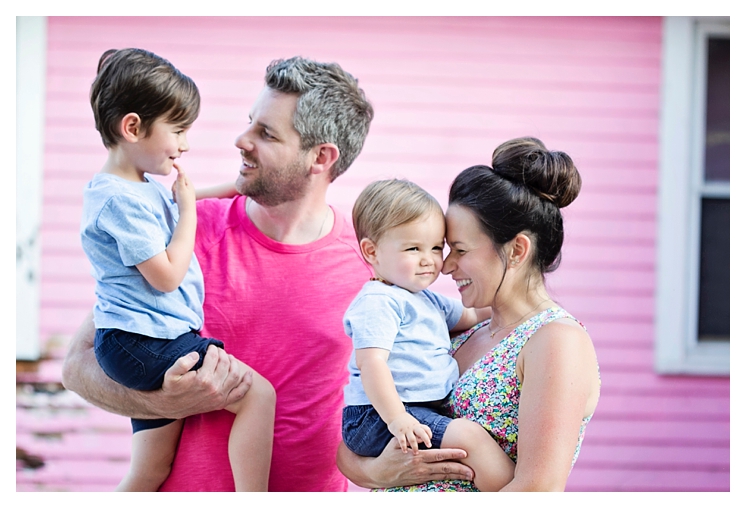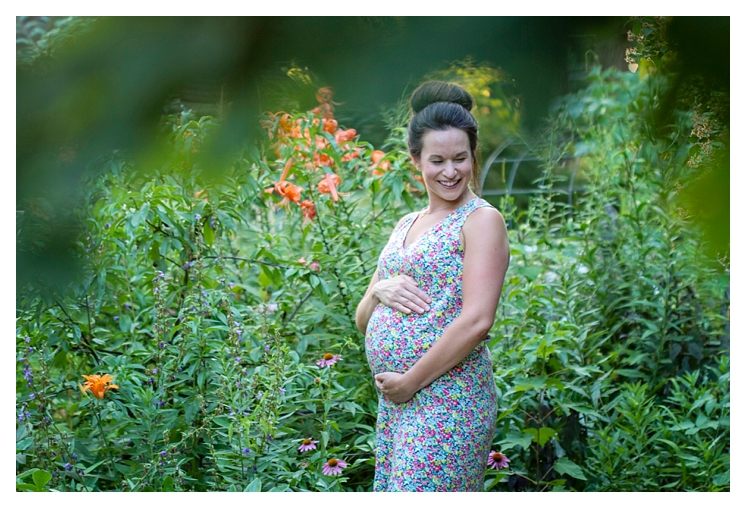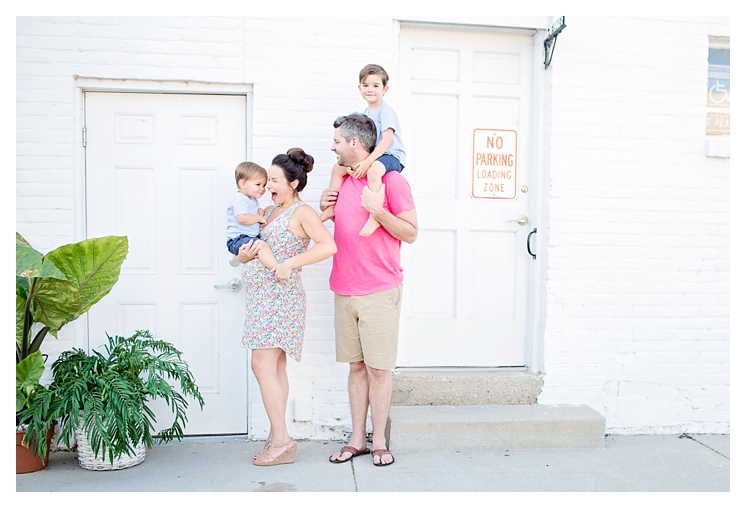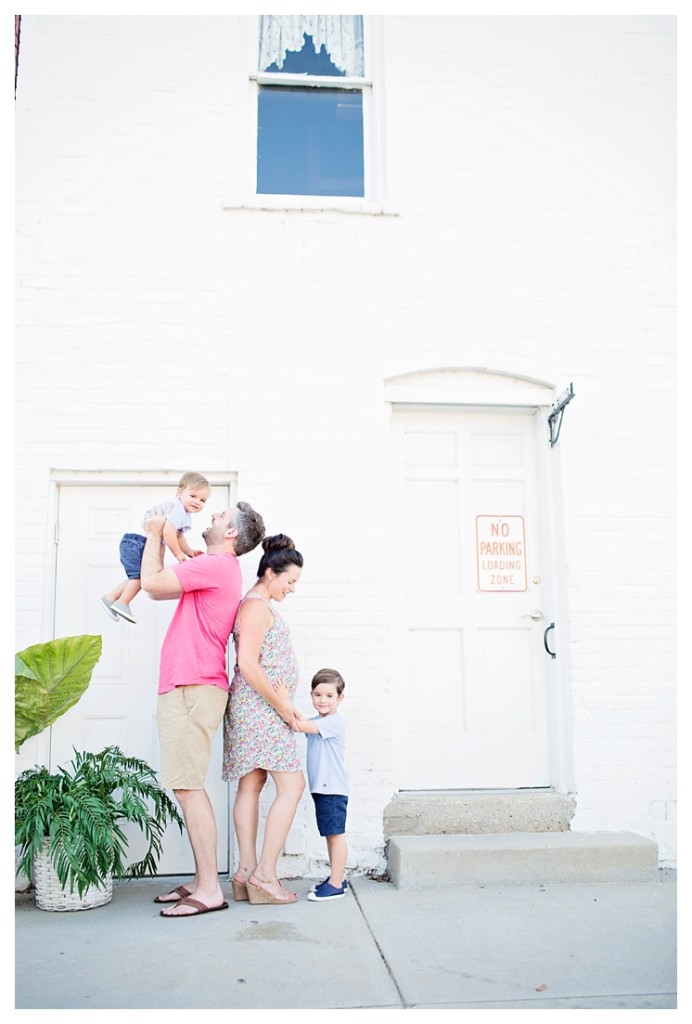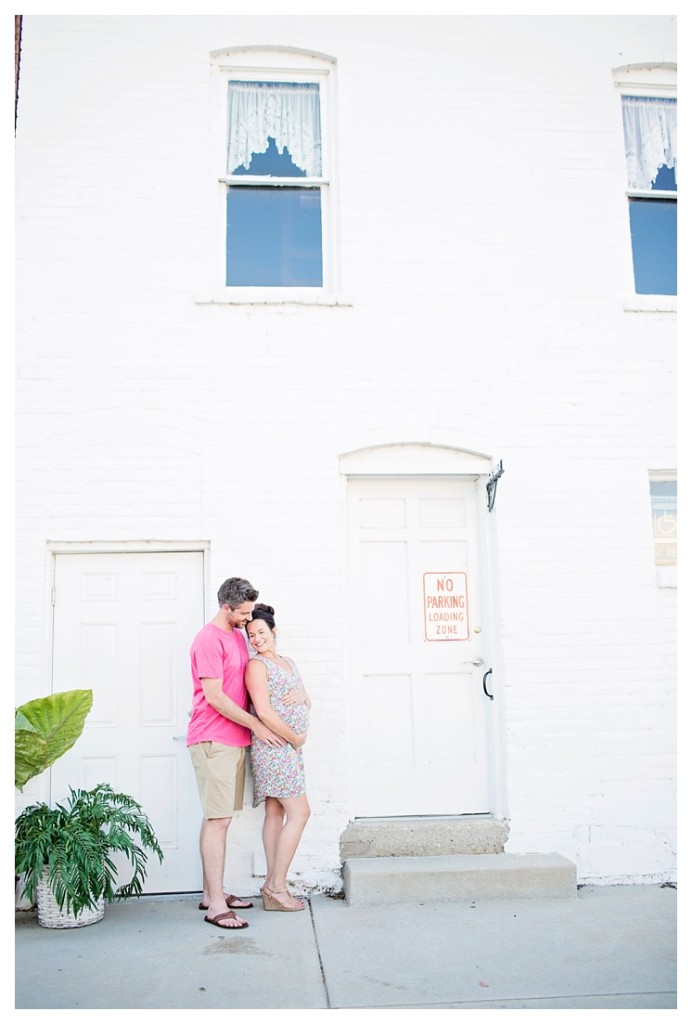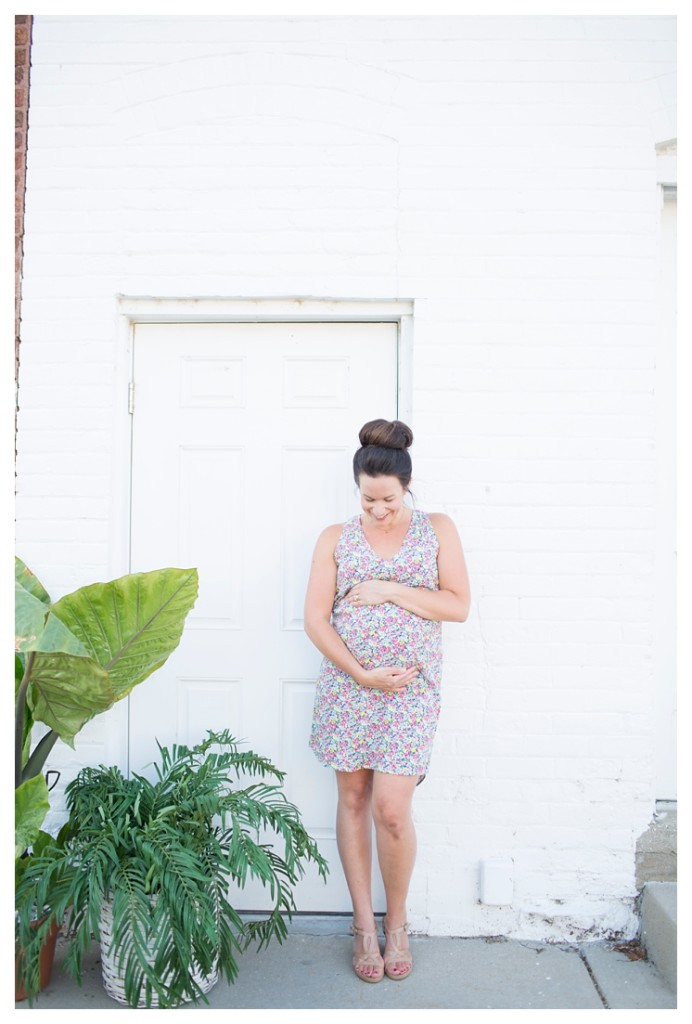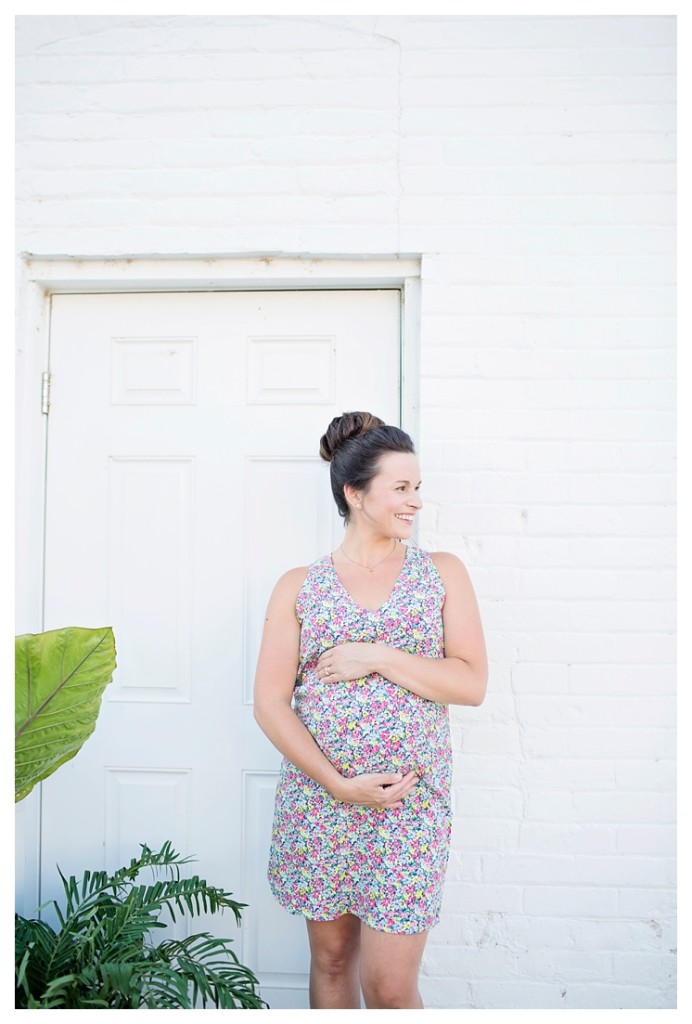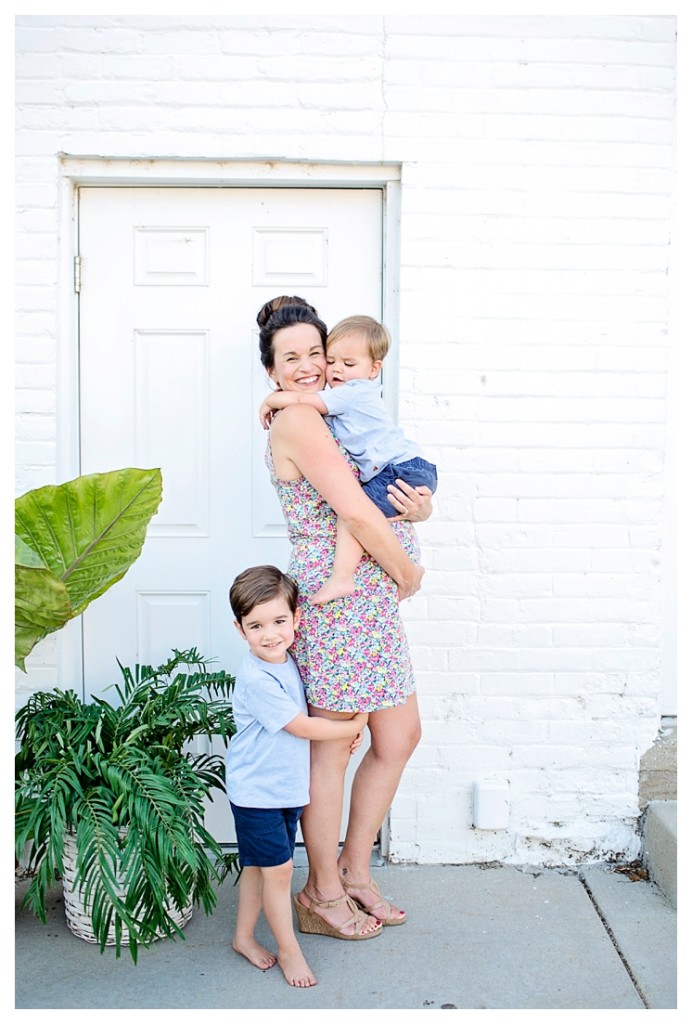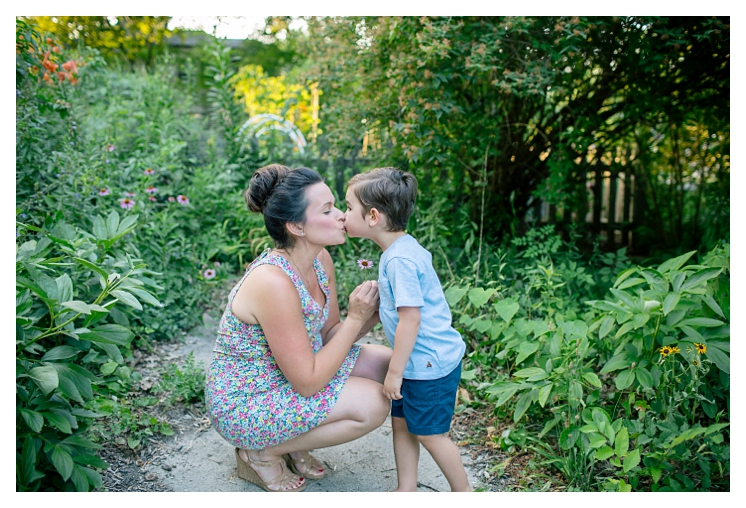Many women find comfort in moving around in between waves to find a position that works with her contractions. It could be standing, kneeling, squatting, leaning on partner, swaying, in a bath, hot shower, etc.
I love encouraging mamas to not be afraid to stay out of bed as much as possible, whether at home or in a hospital or birthing center.
When I first arrived in the wee hours of the morning Erica was laboring quietly upstairs, sometimes alone, sometimes with her husband or doula by her side. She warned me she liked to labor with her first child in a dark closet. Being ready for any kind of light situation and not interrupting the natural birth process is imperative for a birth photographer.
Even the doula’s need a little TLC. I love how this team worked together.
Did you snack during labor ? healthy fats and protein are good for strength and energy.
as morning light started to pour in the downstairs living area, deep connections and more waves came to help bring baby.
letting gravity do some work for you offers a nice reprieve. and I love how furry friends always know there is something going on and don’t leave your side.
In the quiet of the morning, she allowed her body to do what it was made to do.
what an absolutely beautiful, peaceful, enchanting birth. It was magical watching Erica allow her body to just do it’s thing. She made it look effortless, though I know the strength it took to be in total control of her own reactions to the waves and the prompts of allowing baby to pass through.
The first feed
Don’t cut that cord just yet: A research review finds keeping the umbilical cord of a newborn intact a little longer may lead to better health benefits for the baby.
The umbilical cord delivers oxygen and food from a mother’s bloodstream, via the placenta, into the baby’s blood to provide nutrients. Specifically, one vein in the cord carries blood along with the oxygen and nutrients from mom to baby, while two other arteries return deoxygenated blood and waste from baby to mom, according to Britain’s National Health Service. Later in the pregnancy, the umbilical cord delivers disease-fighting antibodies that will boost the newborn’s immunity in the months after birth.
The new review comes from The Cochrane Library, a nonprofit collaboration of international researchers who review evidence that could guide policy decisions. They looked at 15 studies involving more than 3,900 women and their babies, looking at how clamping the cord less than one minute after birth compares to waiting one minute or longer after birth. The researchers wanted to see how each option affected both mom and baby’s health.
The study was published July 11 by the Cochrane Pregnancy and Childbirth Group.
Clamping the cord immediately or later did not make a major difference for new moms, when it came to their risk of bleeding, blood loss or hemoglobin levels, a measure of healthy blood and iron levels.
For babies, however, the researchers did find some benefits to delaying cord clamping. Babies had higher hemoglobin levels in the days after birth — suggesting healthier blood — and were less likely to have an iron deficiency within six months after birth, the researchers found.
(CBSnews.com) source
One of my favorite things about home births is that both parents can be involved in the newborn exam. Your midwife will b right there with you conducting a thorough exam of baby, just inches away from the new mama.
dad doesn’t have to leave mama side, and they both can marvel at their new bundle together
using dad’s strong arms to weigh baby
I always love seeing those ‘widdle’ baby feet sticking out!
(https://avivaromm.com/postpartum-herb-baths/) source
absolutely beautiful post part body. I’m in awe of how wonderfully made we are!
any birth is beautiful. Home, Hospital, center, C section. Birth IS BEAUTIFUL.
Documenting your birth allows you to relive these precious moments that can be somewhat of a blur .
If you know someone expecting, I’d love to share what I offer for documenting birth stories!
It’s Your Birth Midwifery Services







